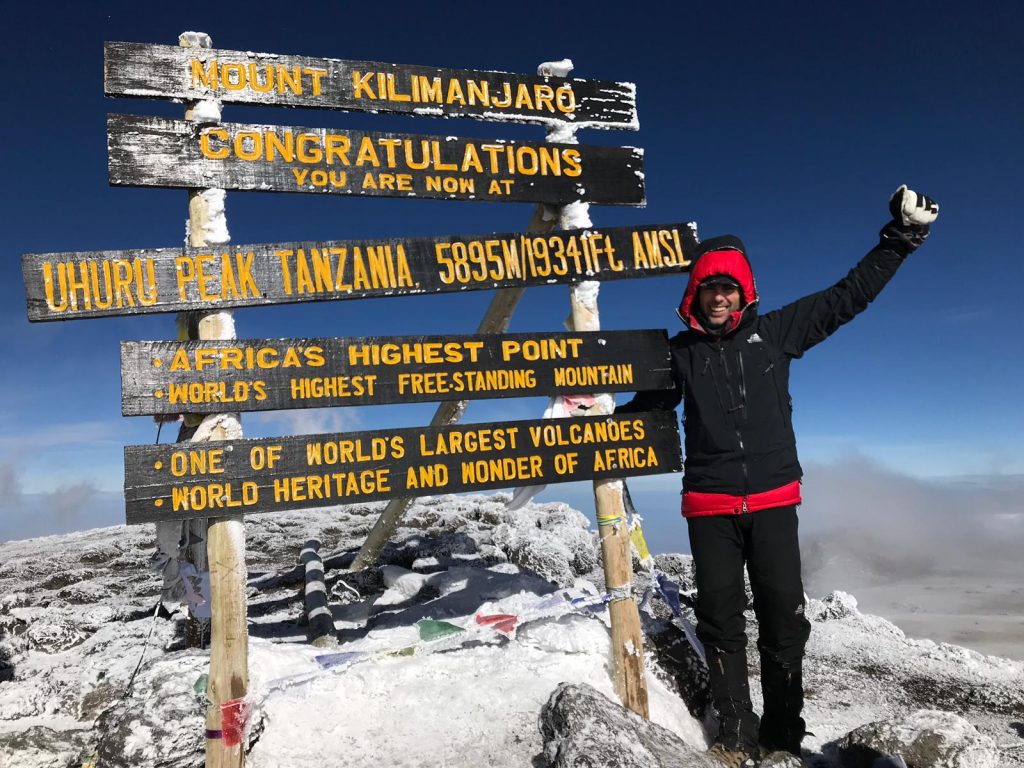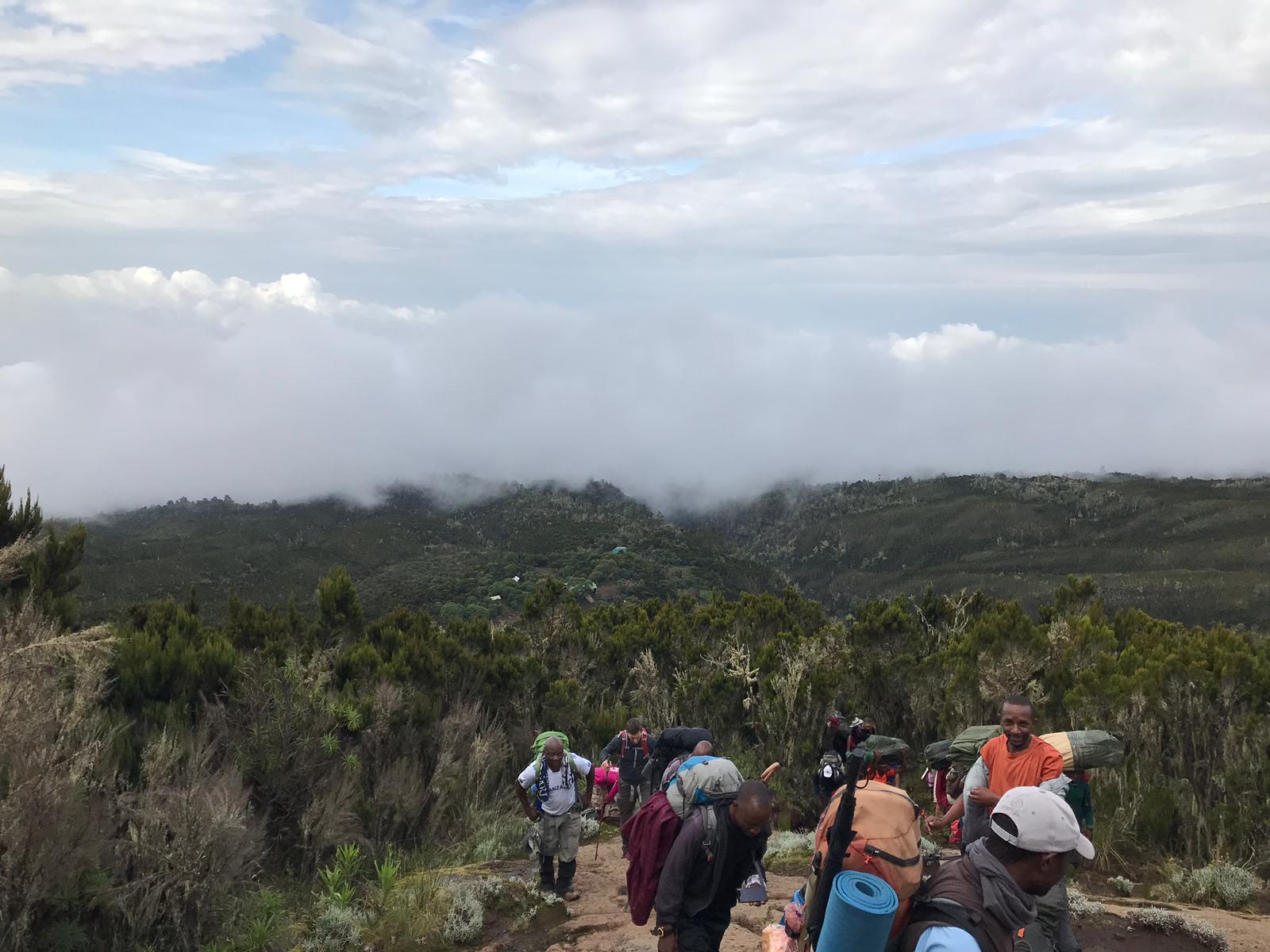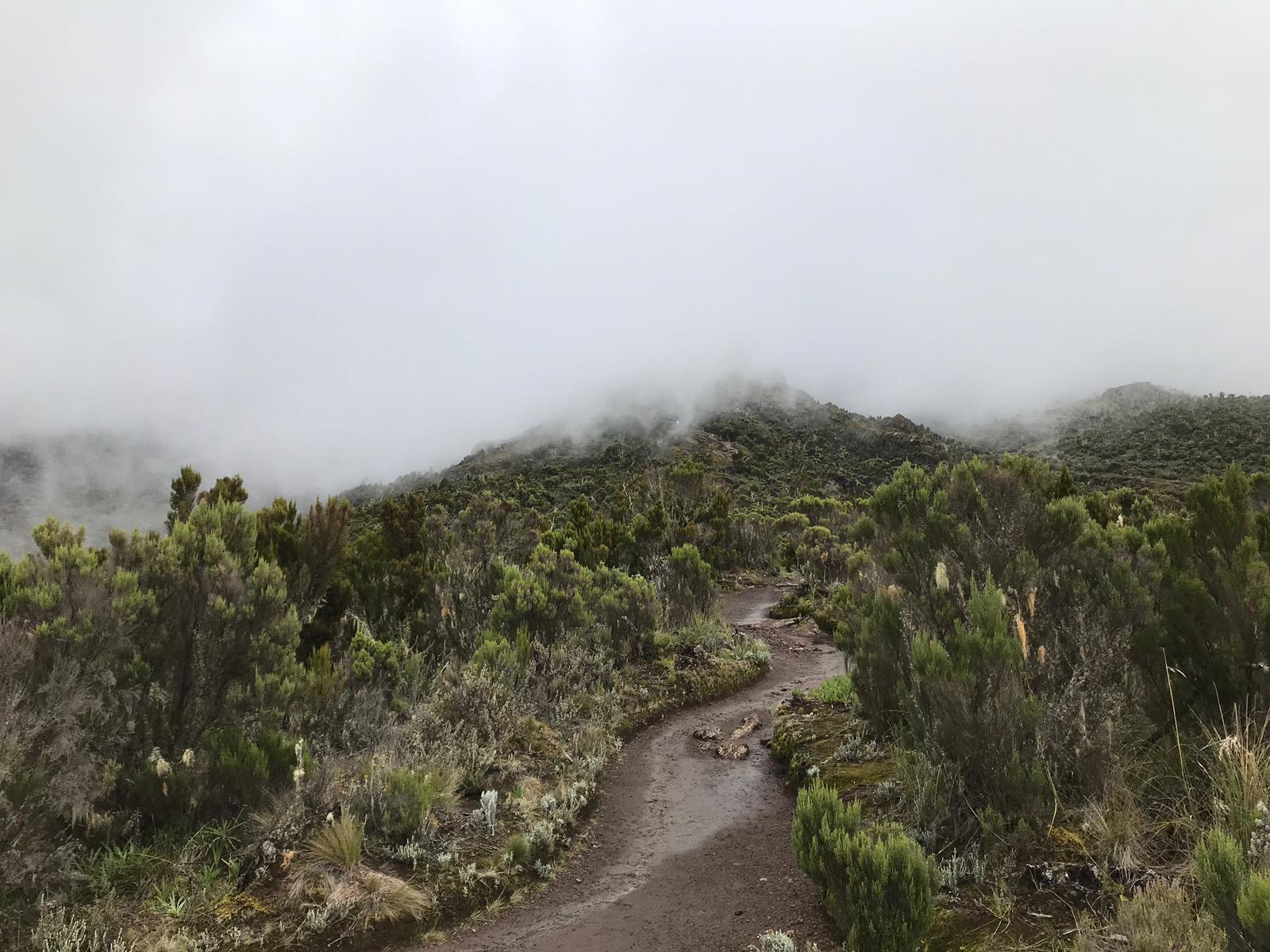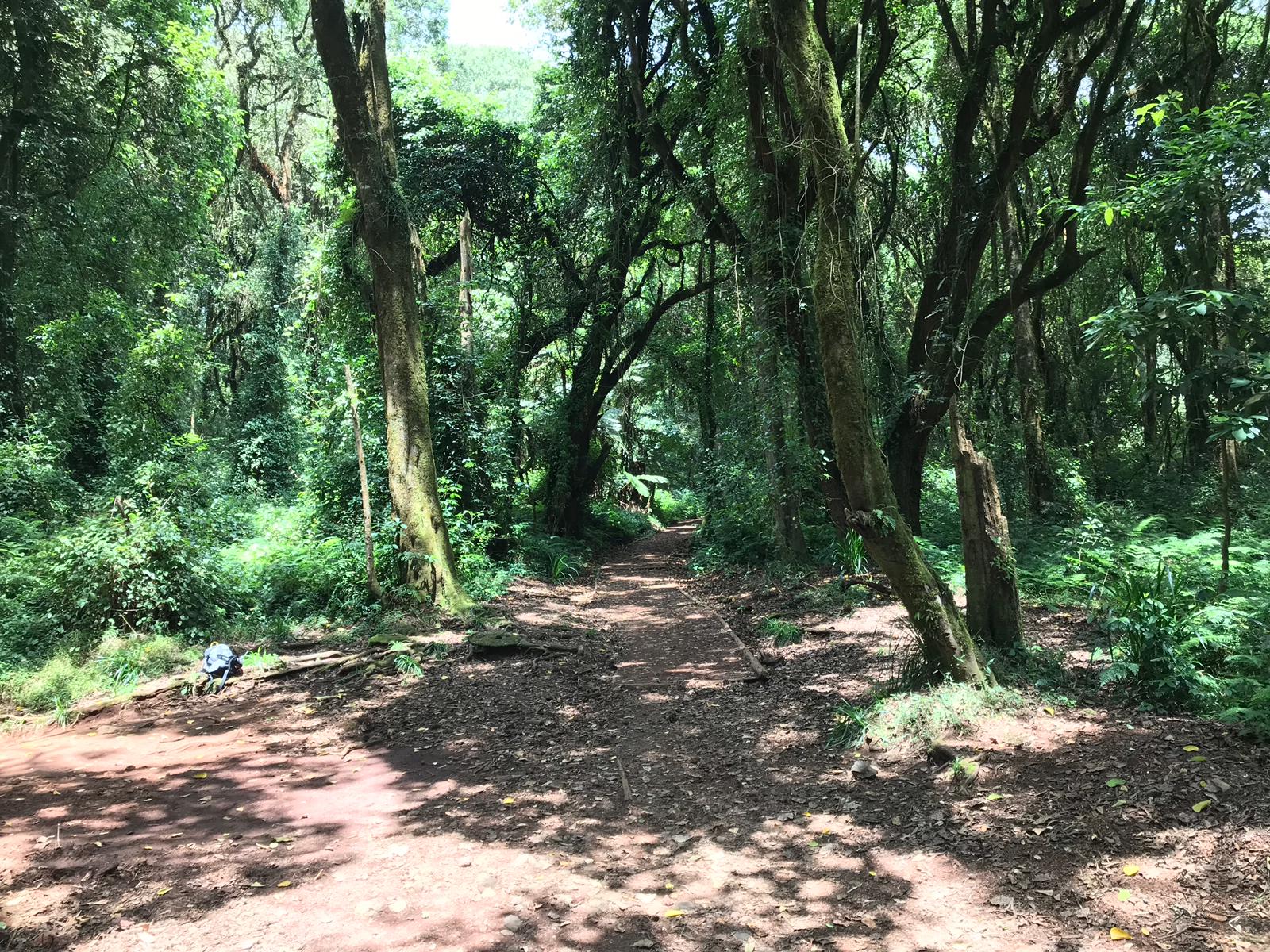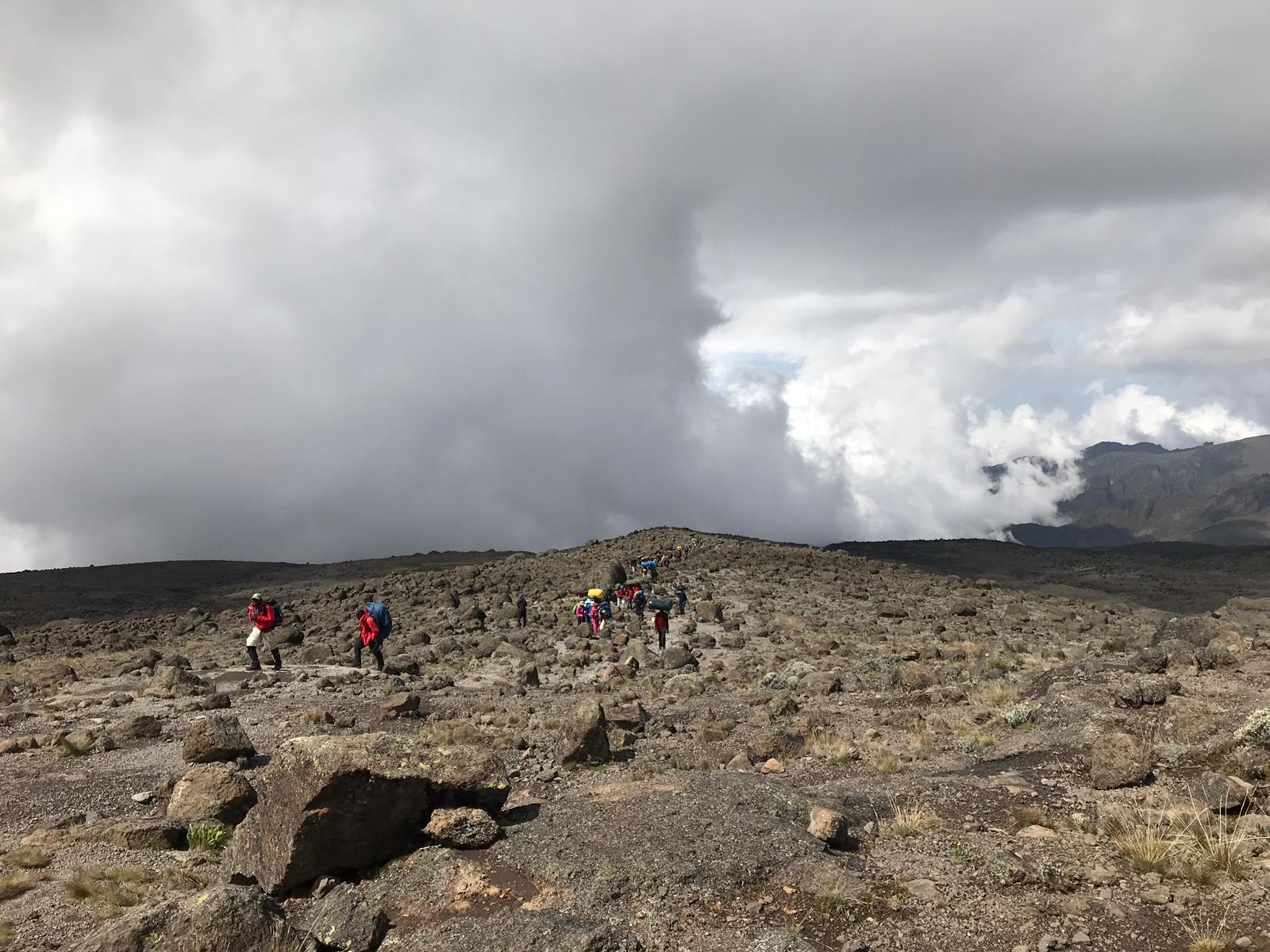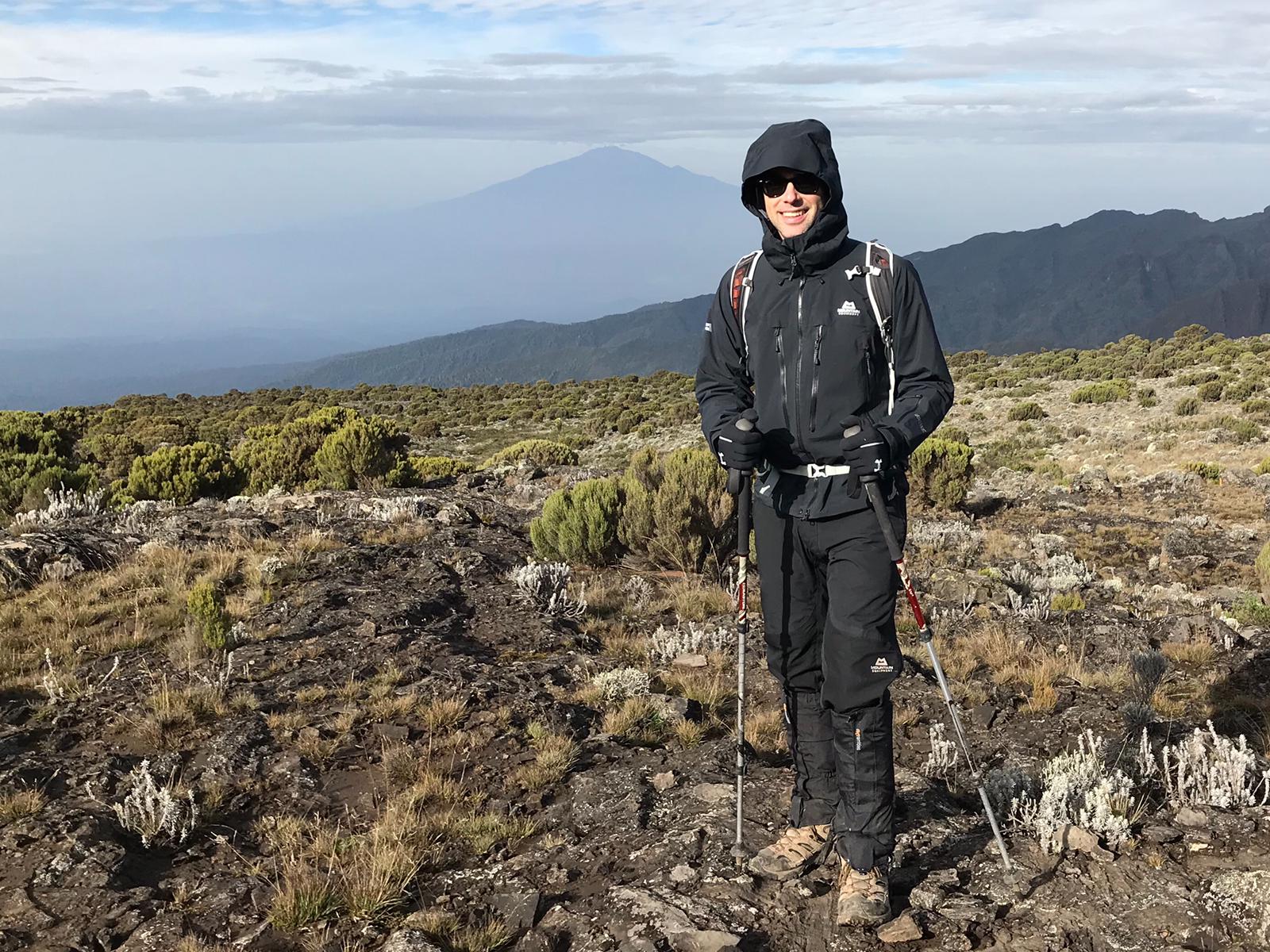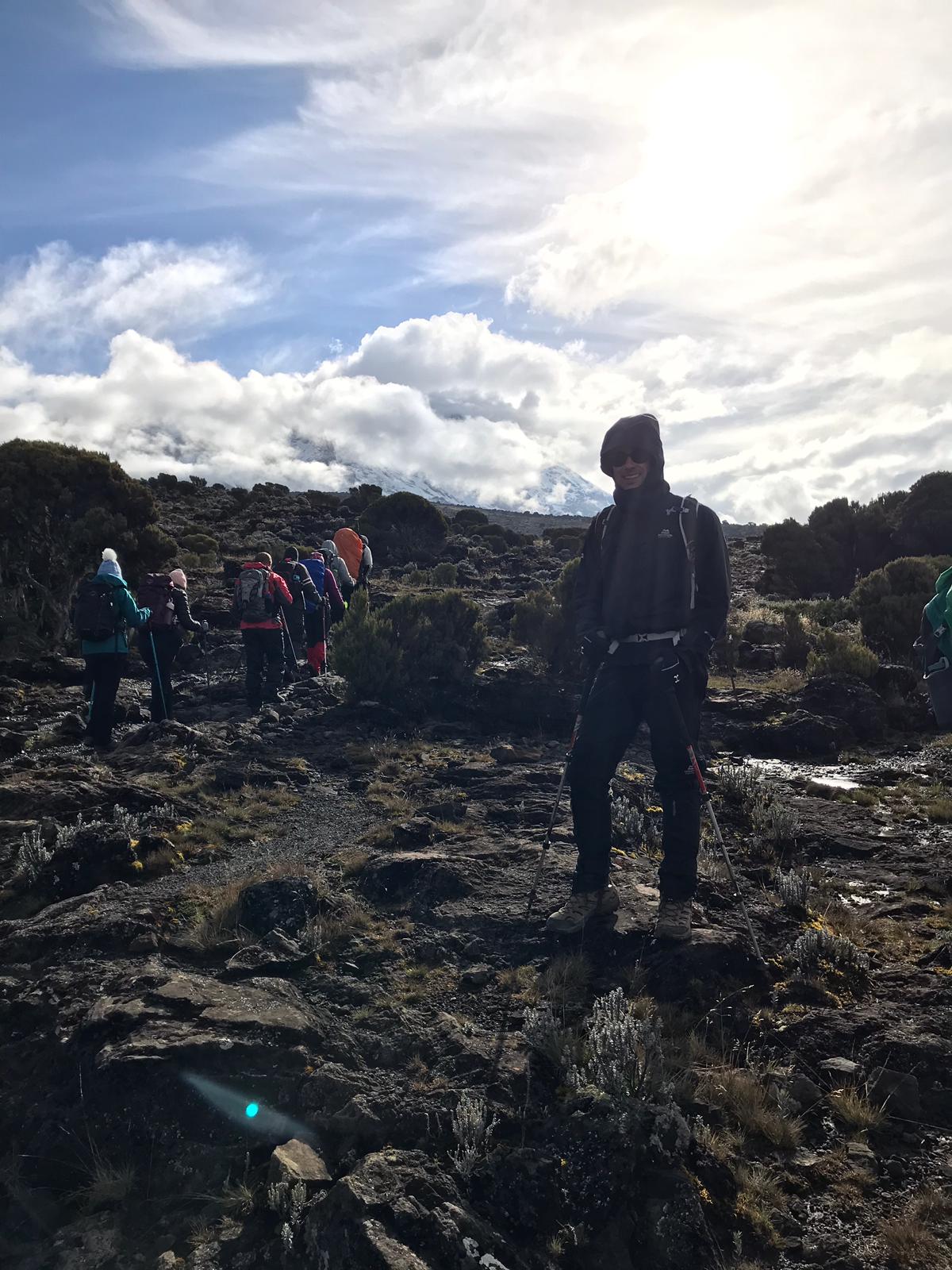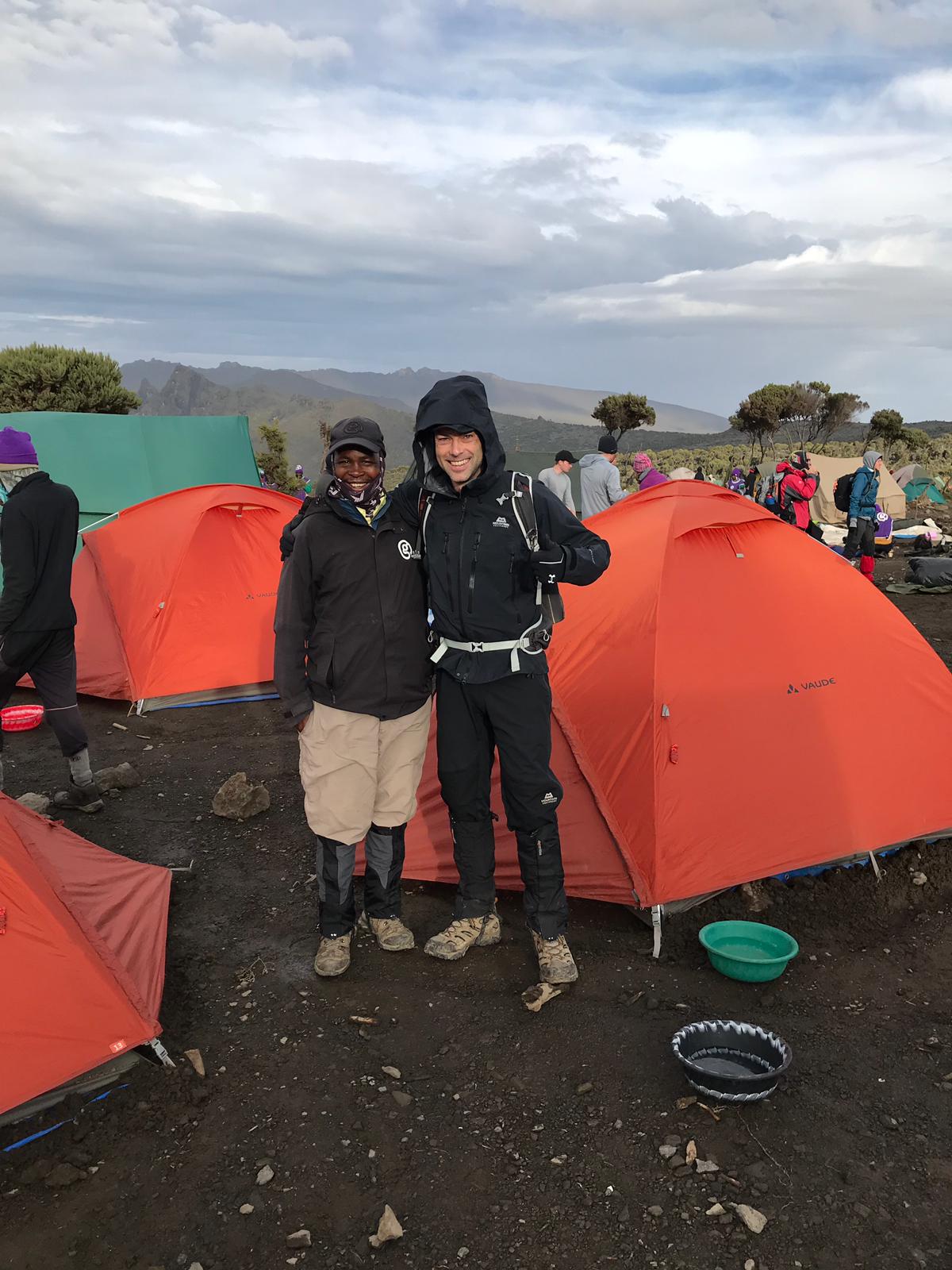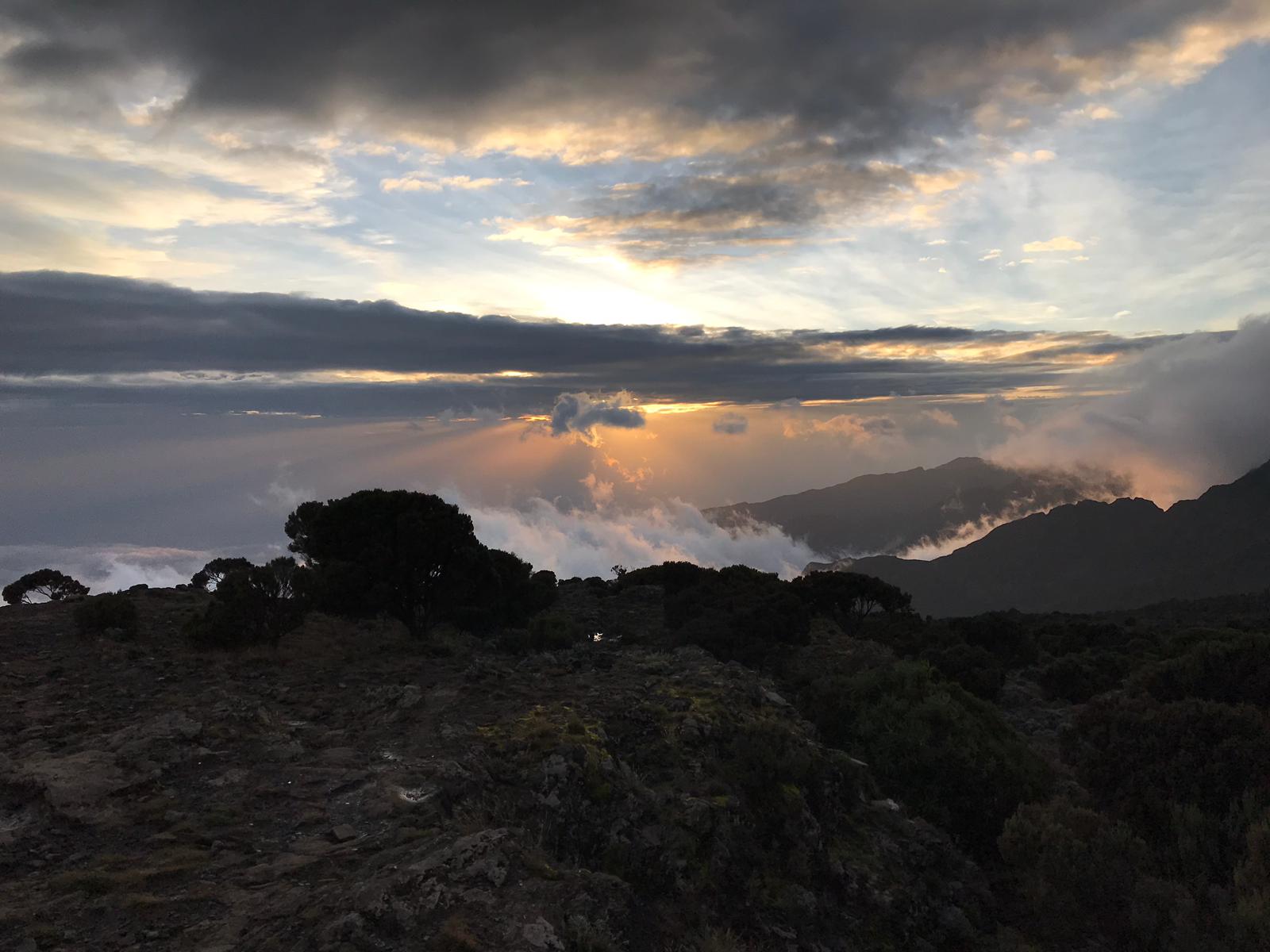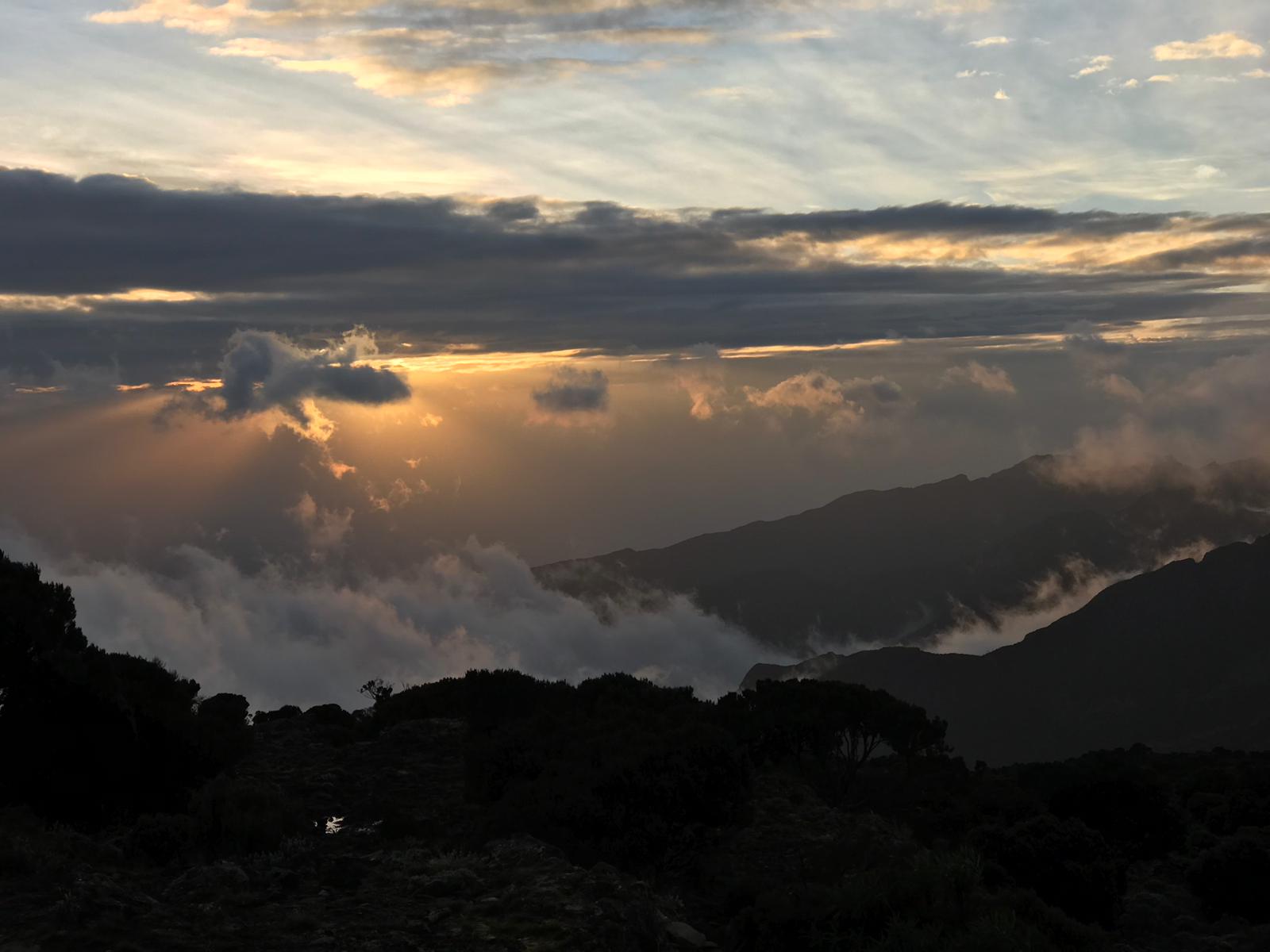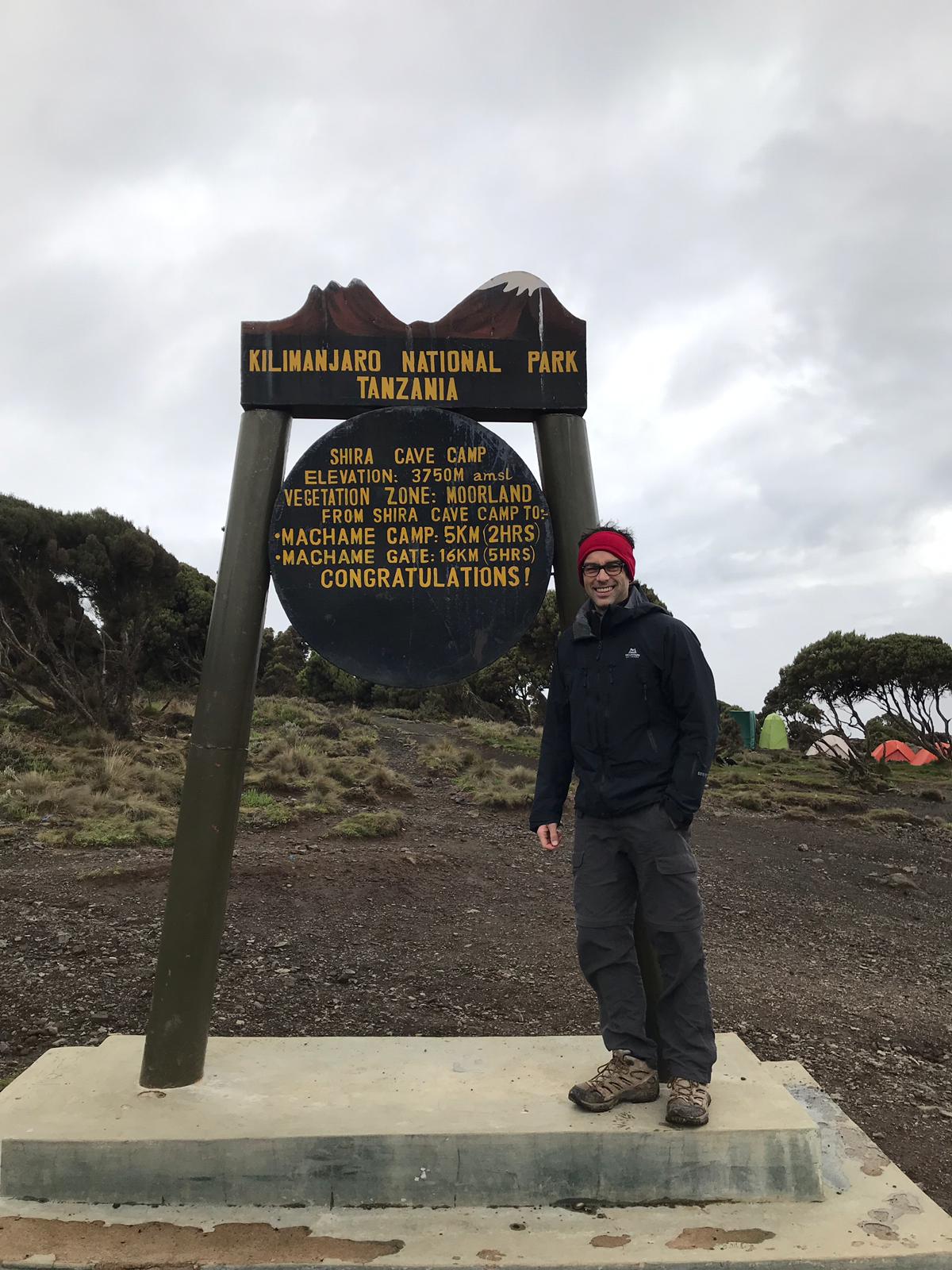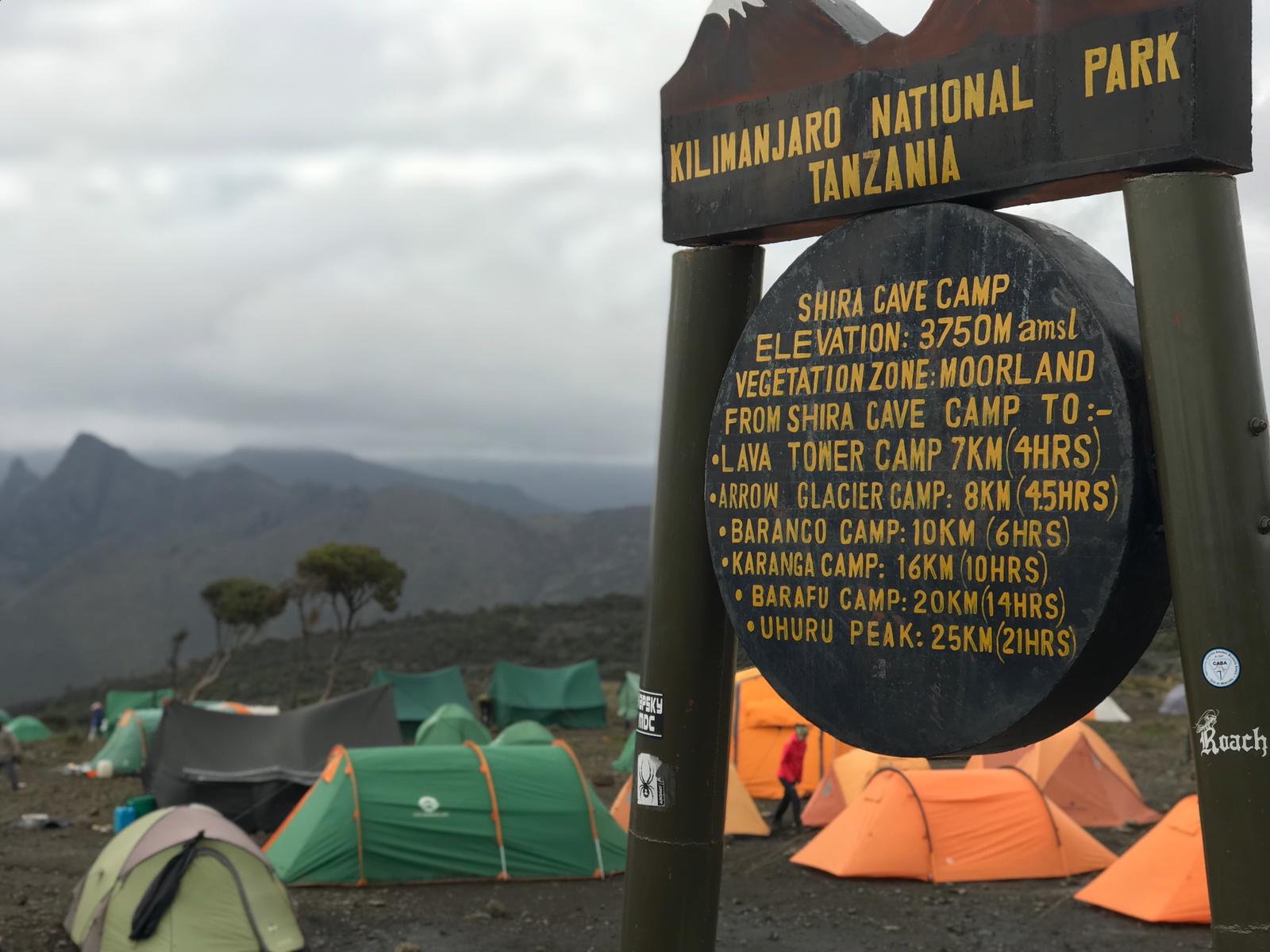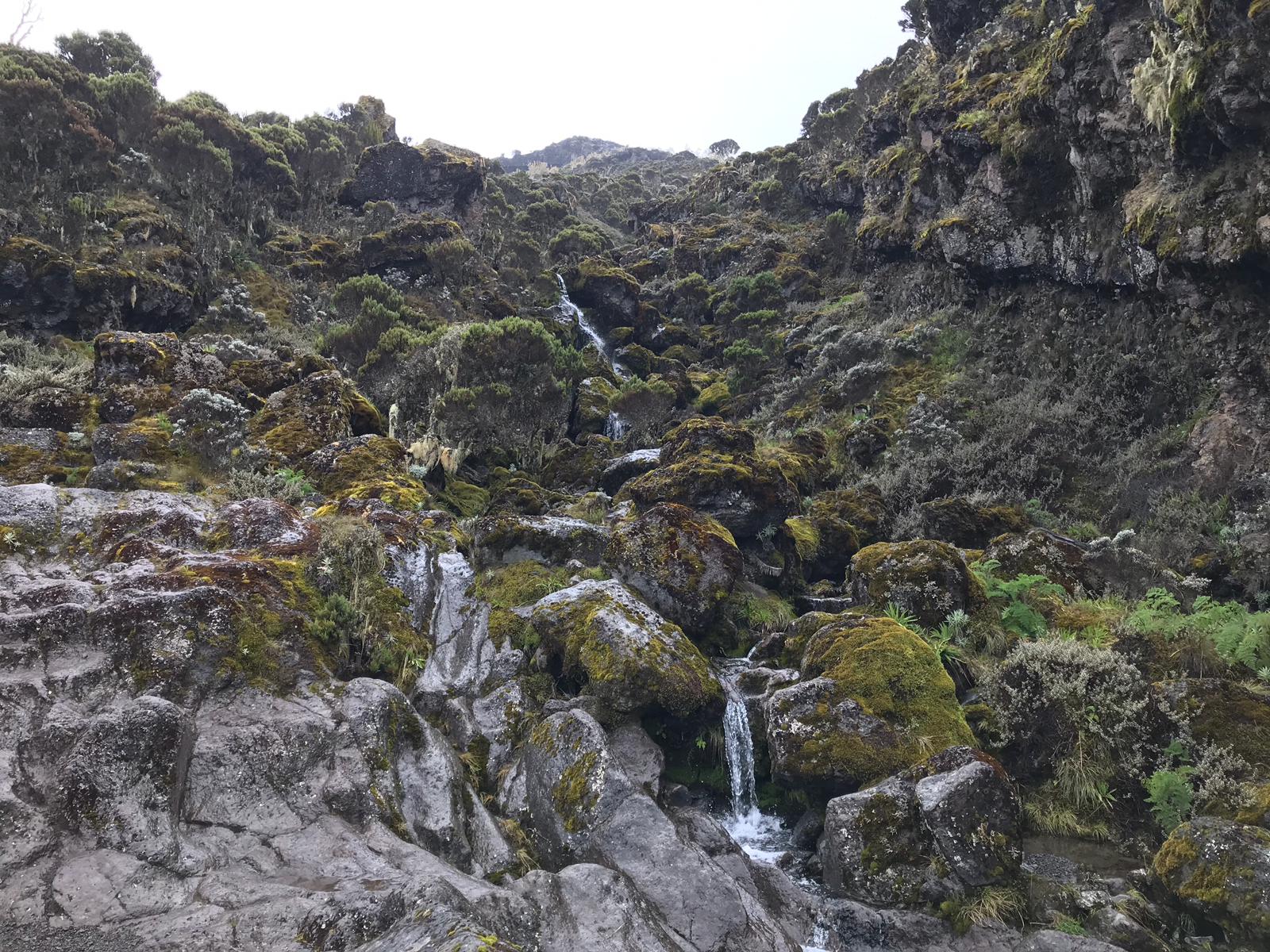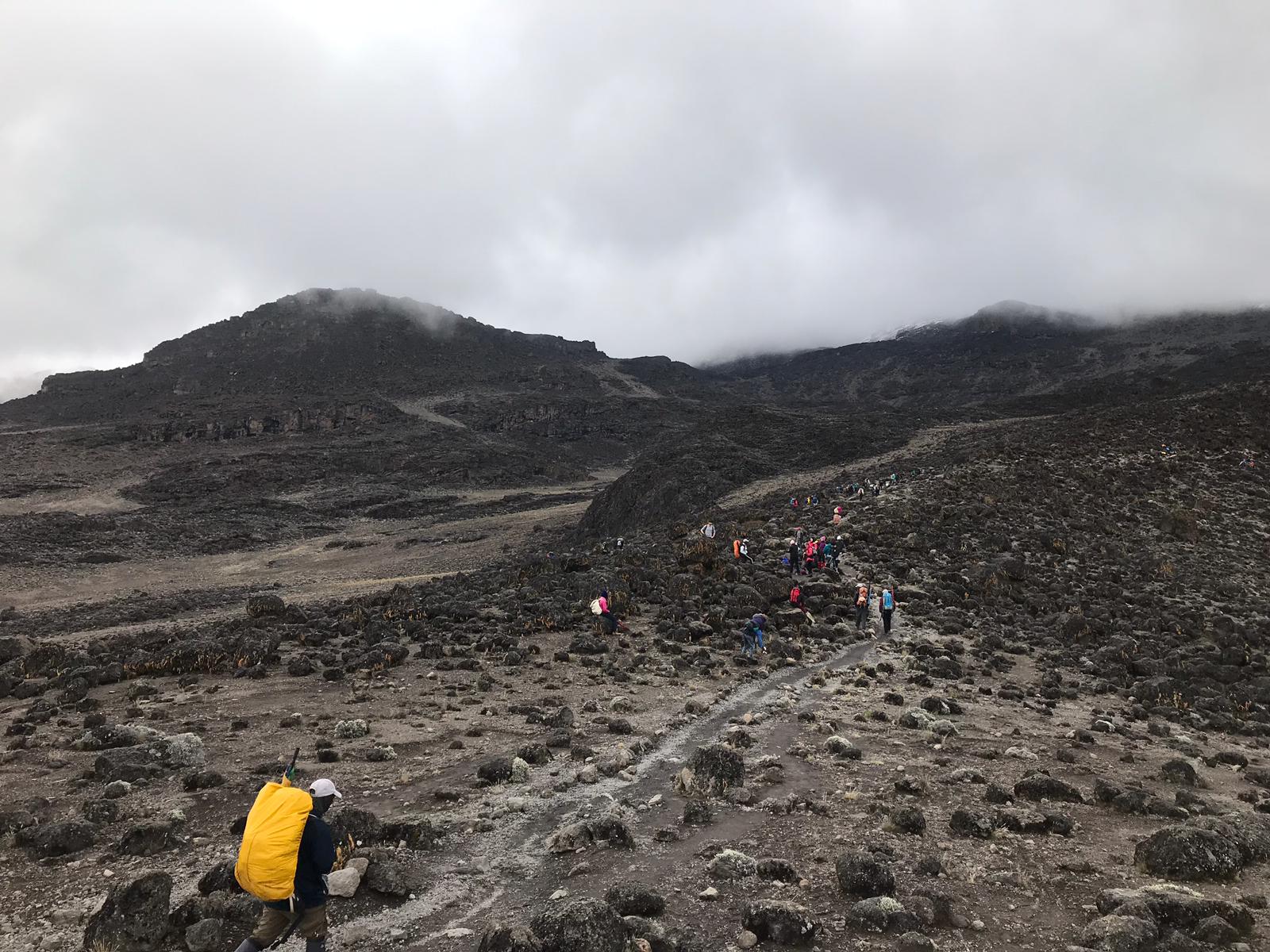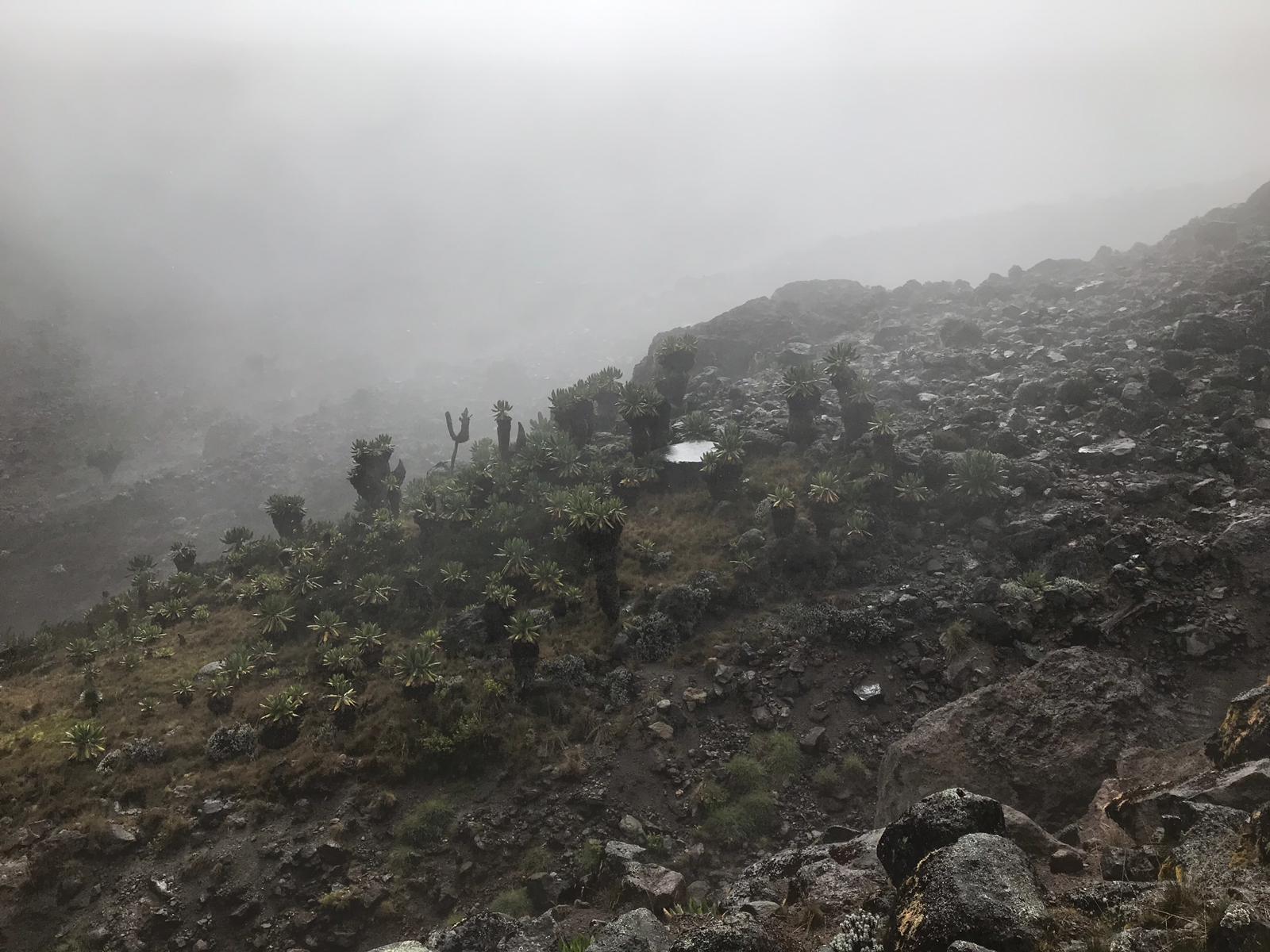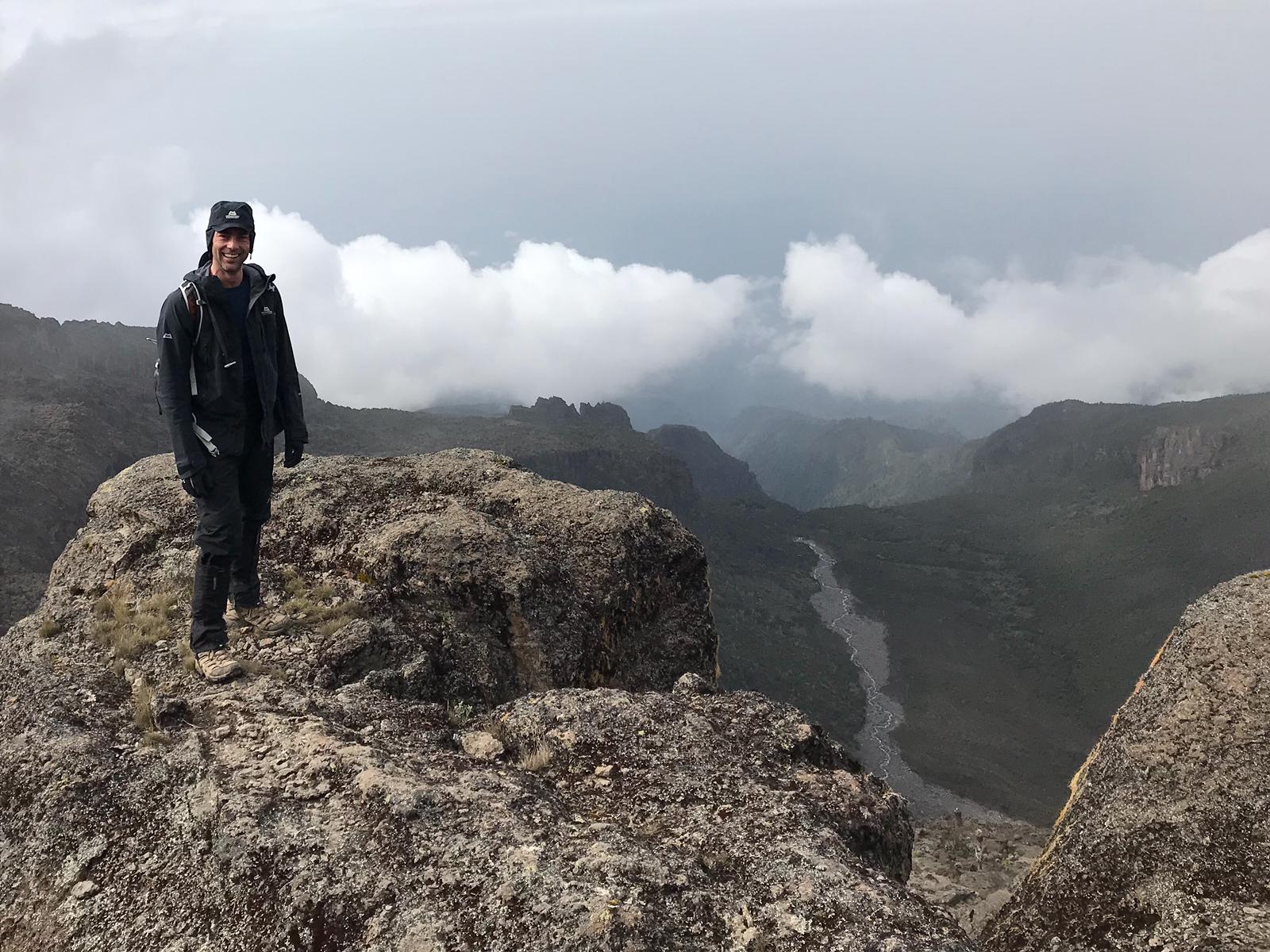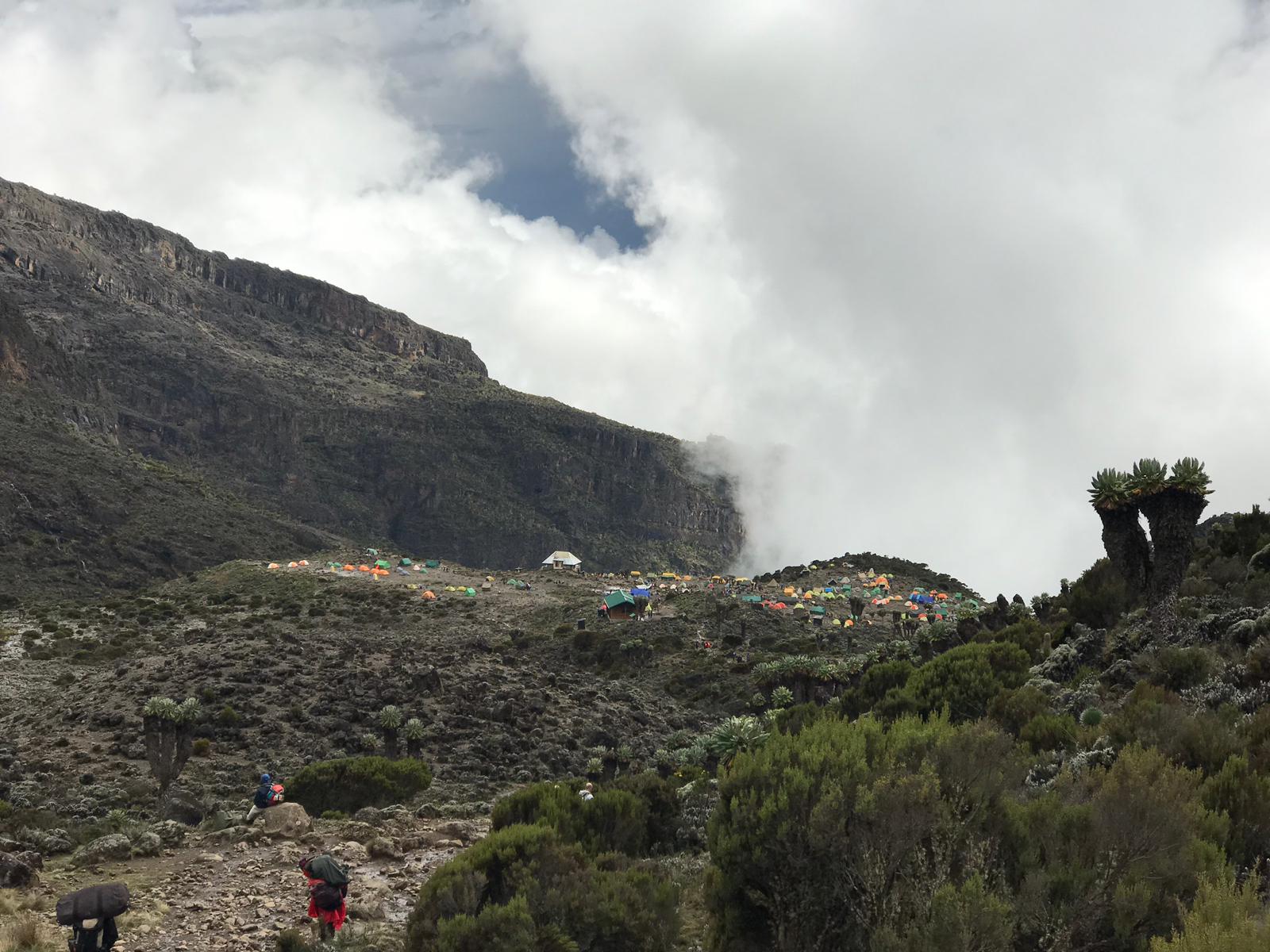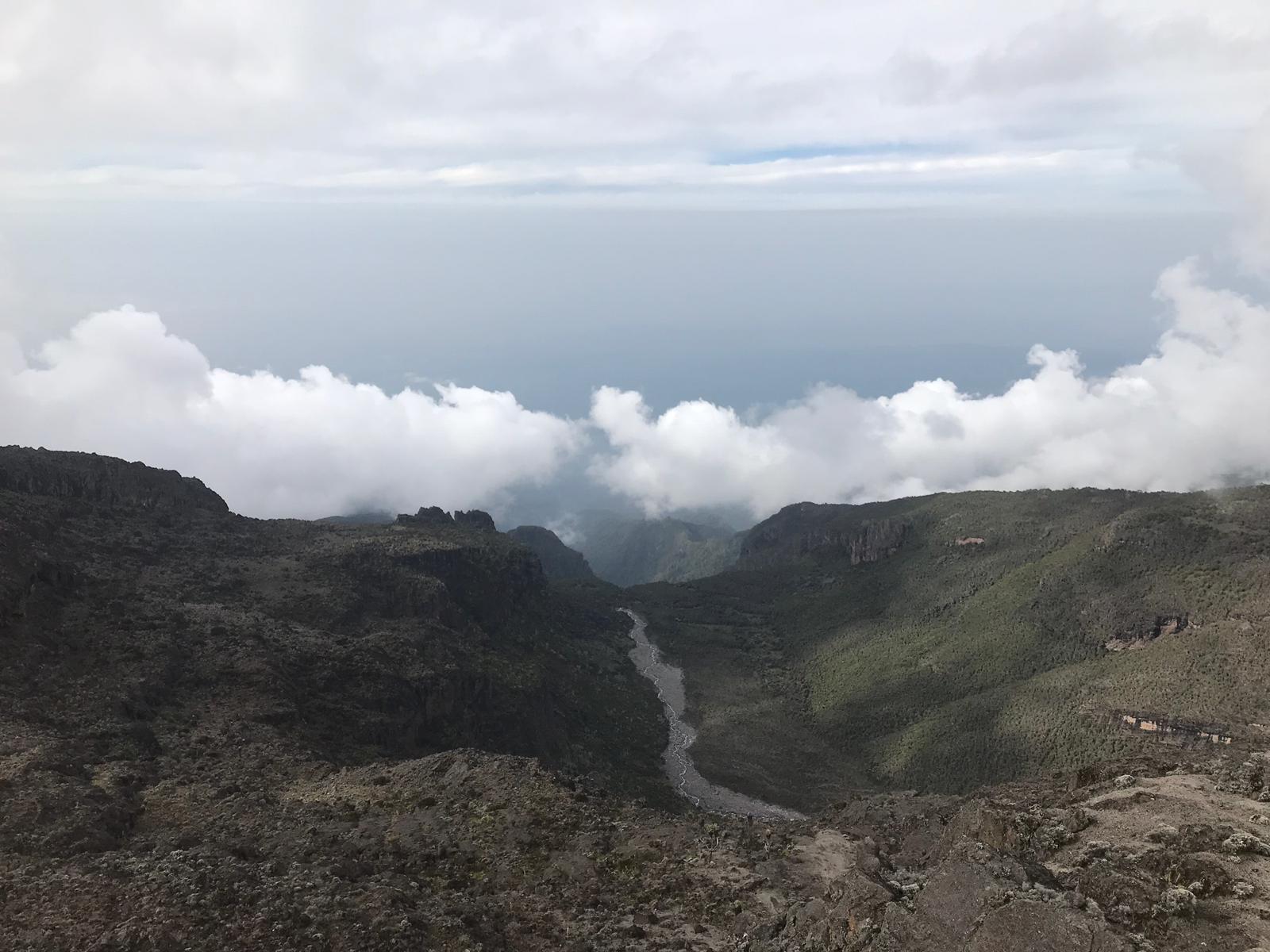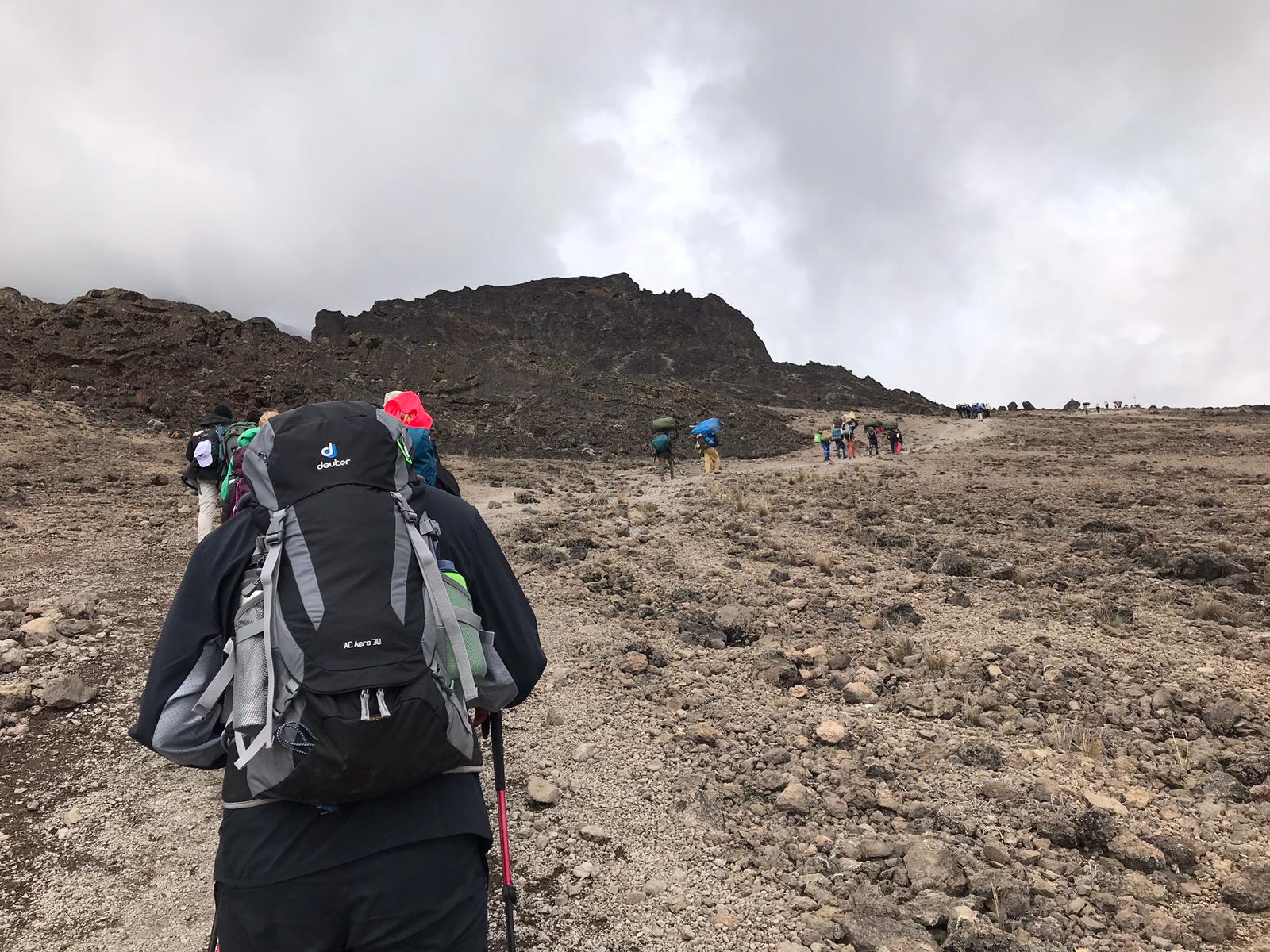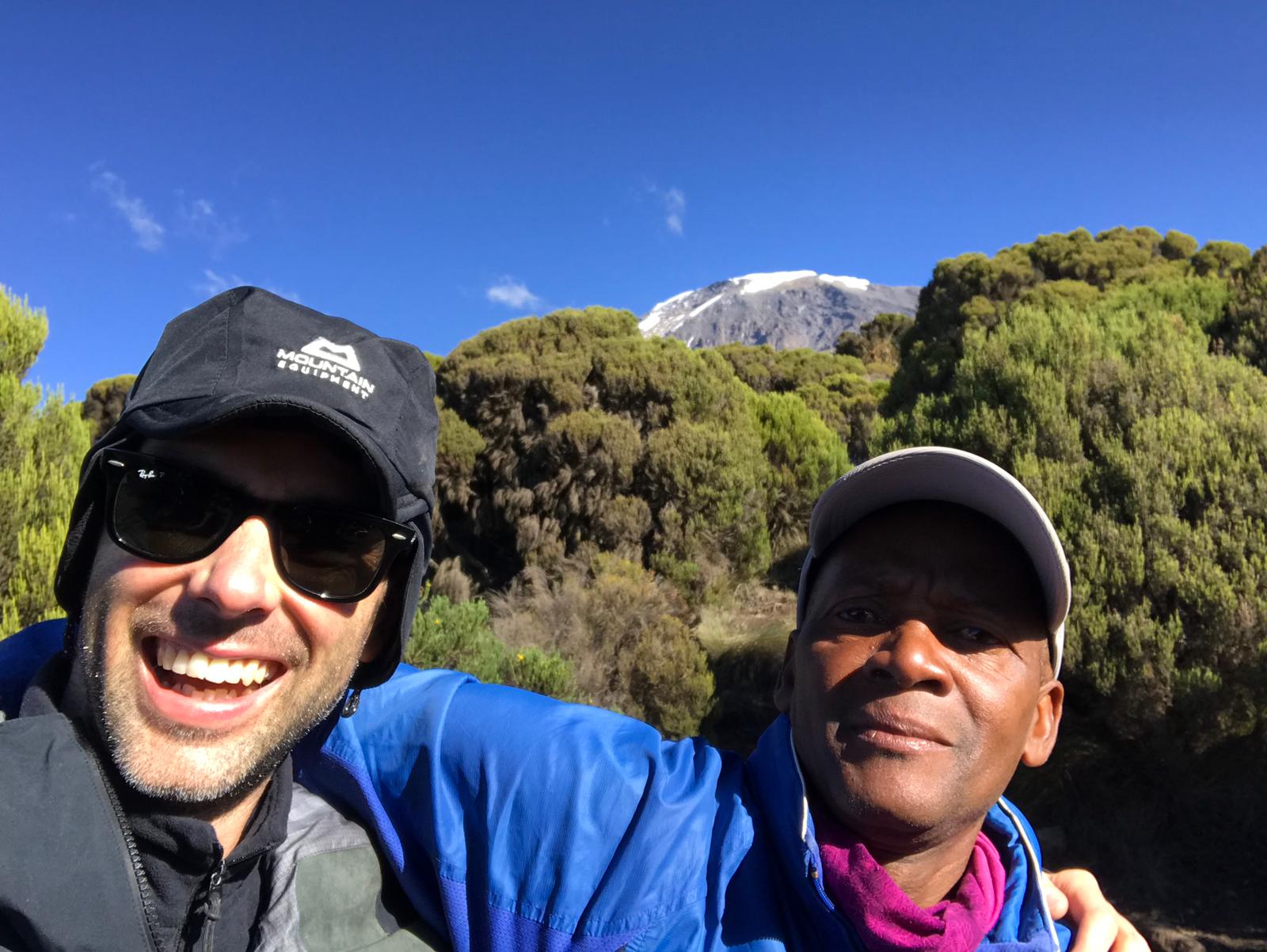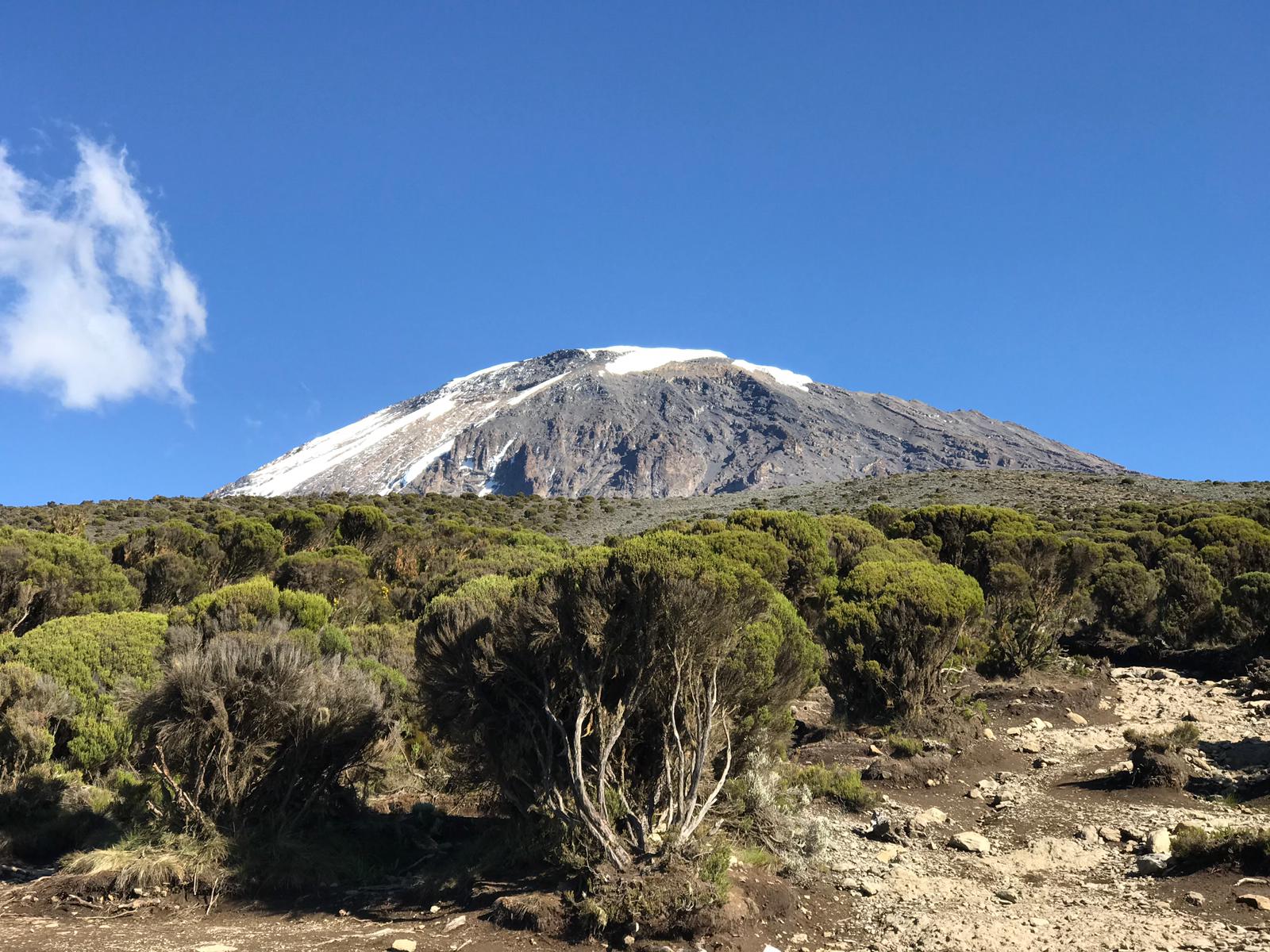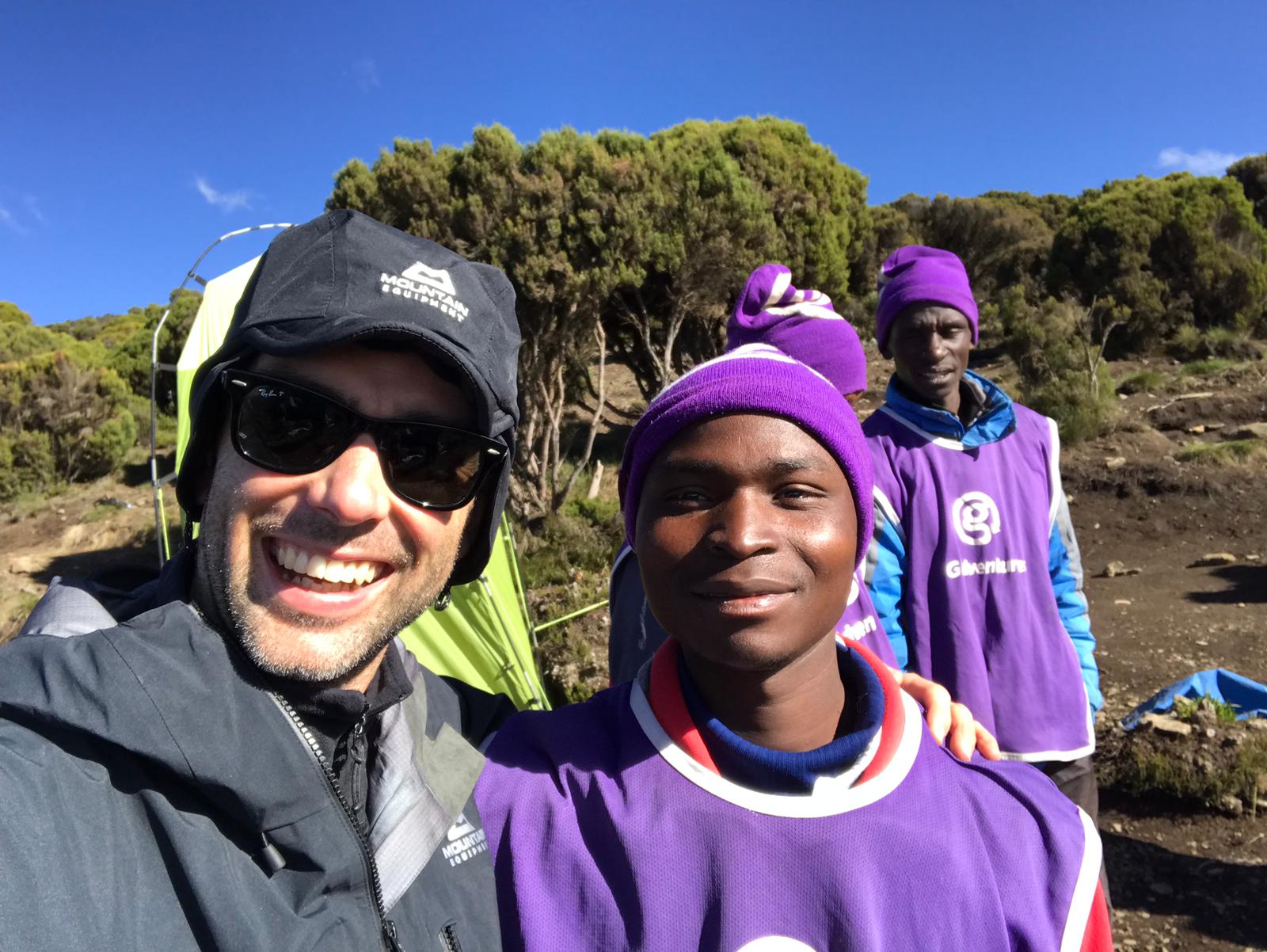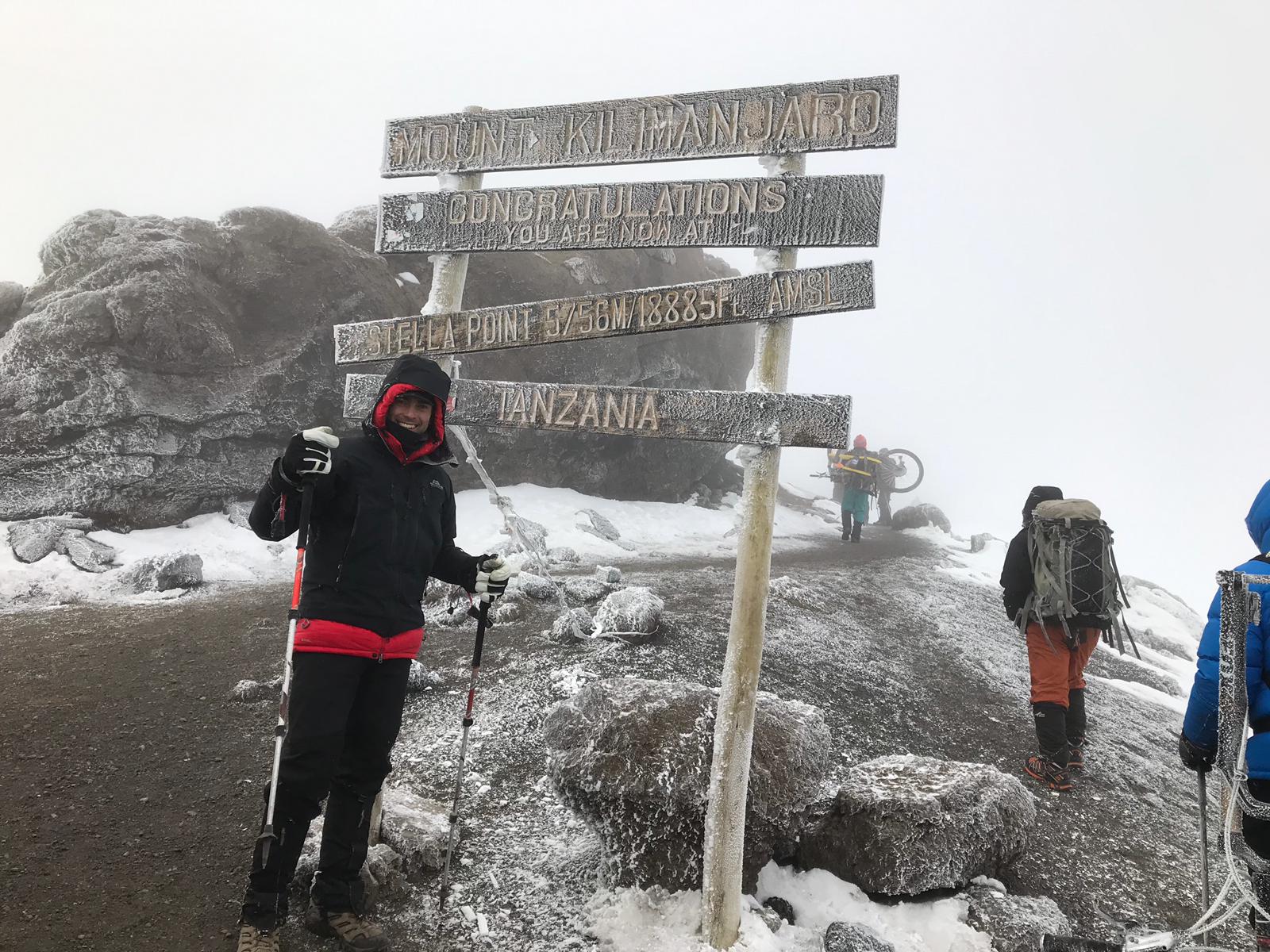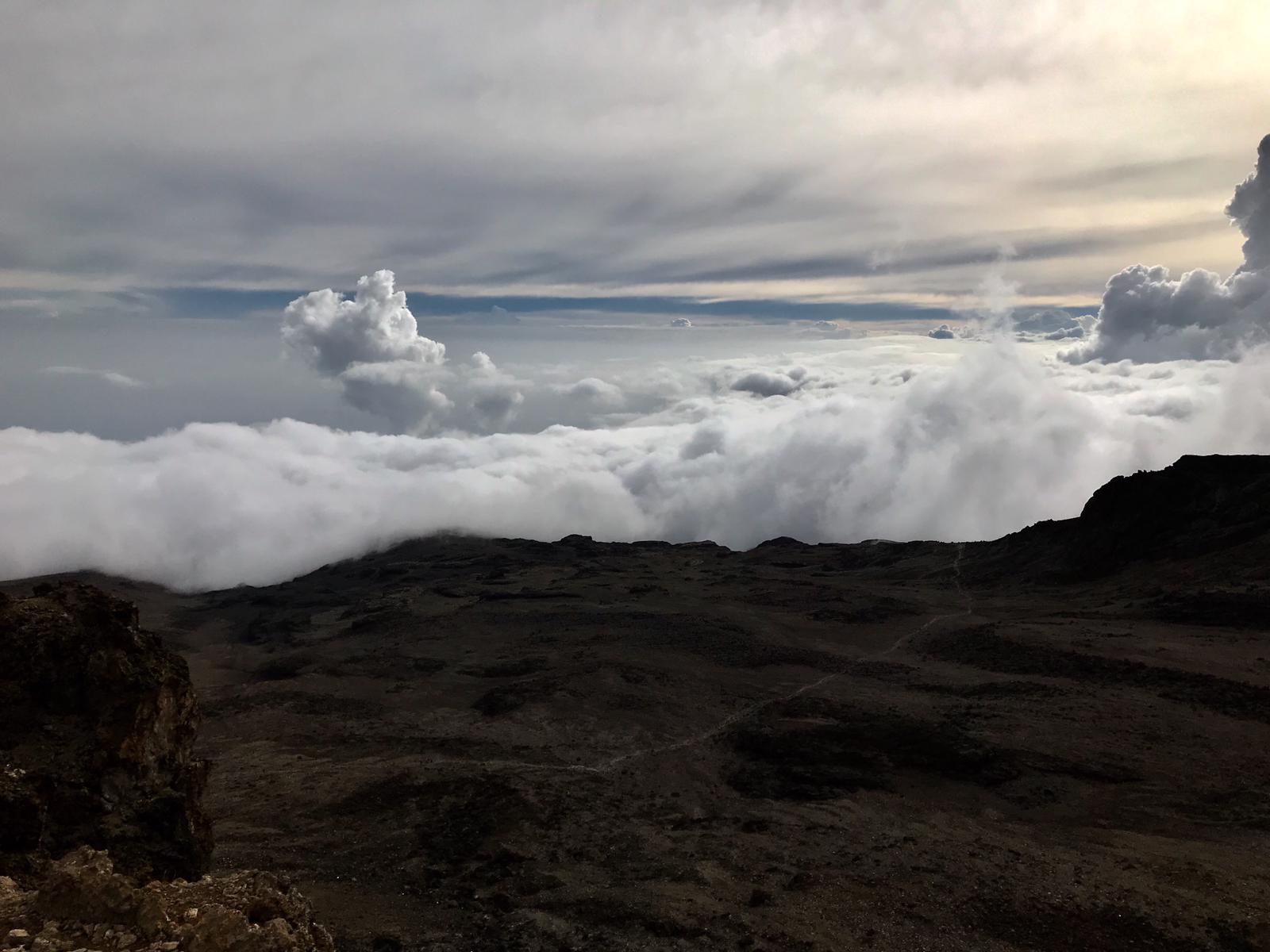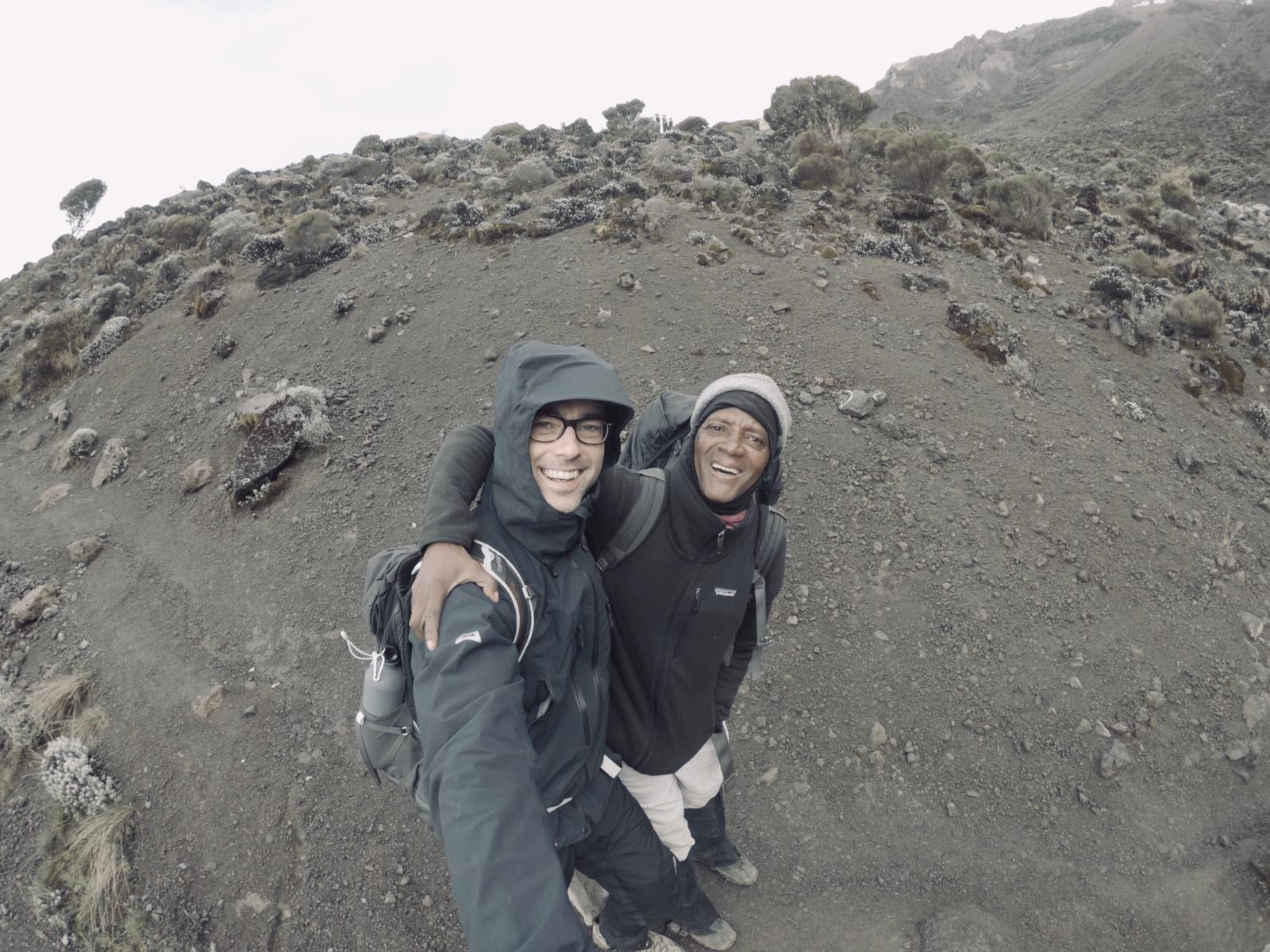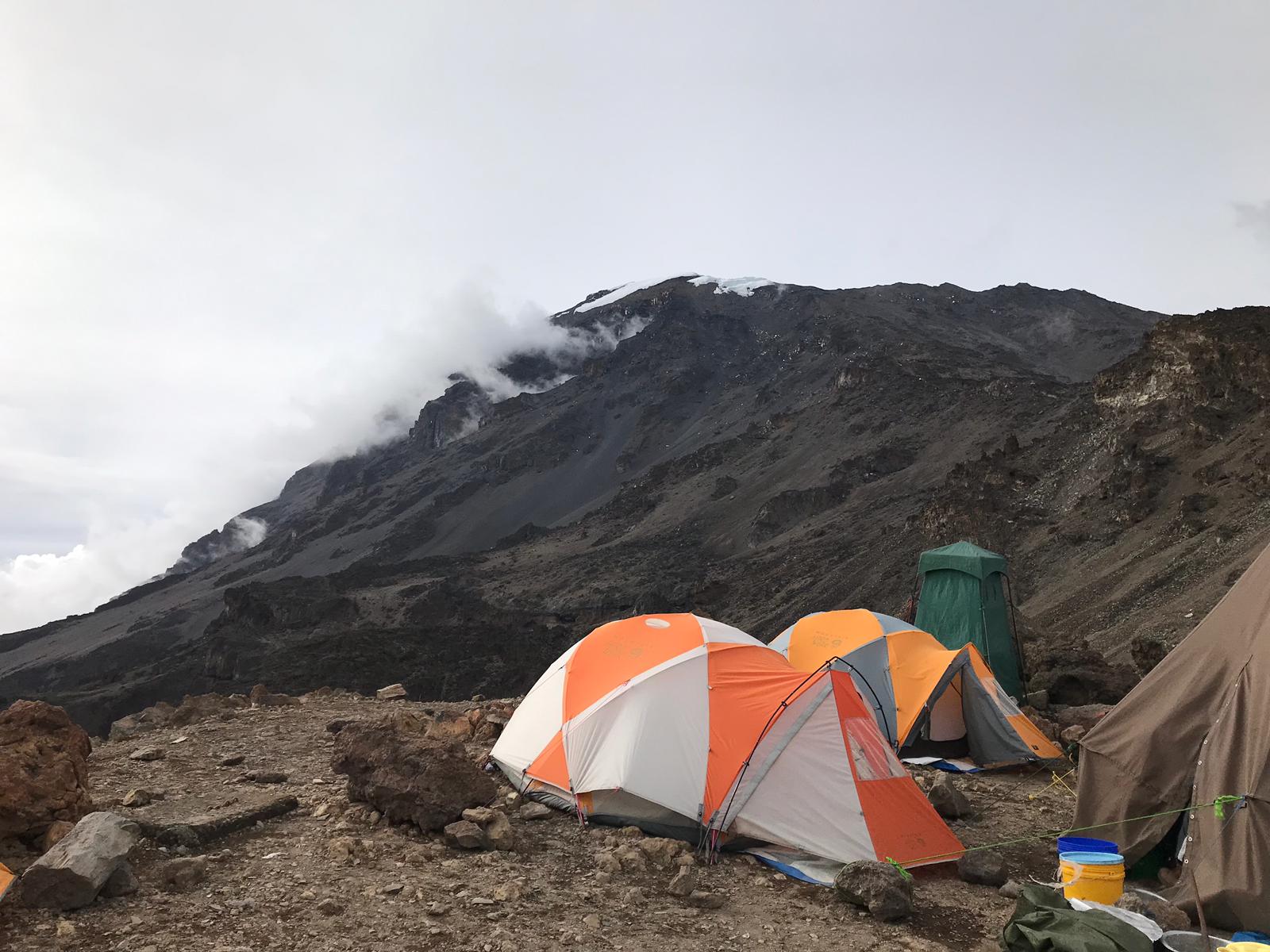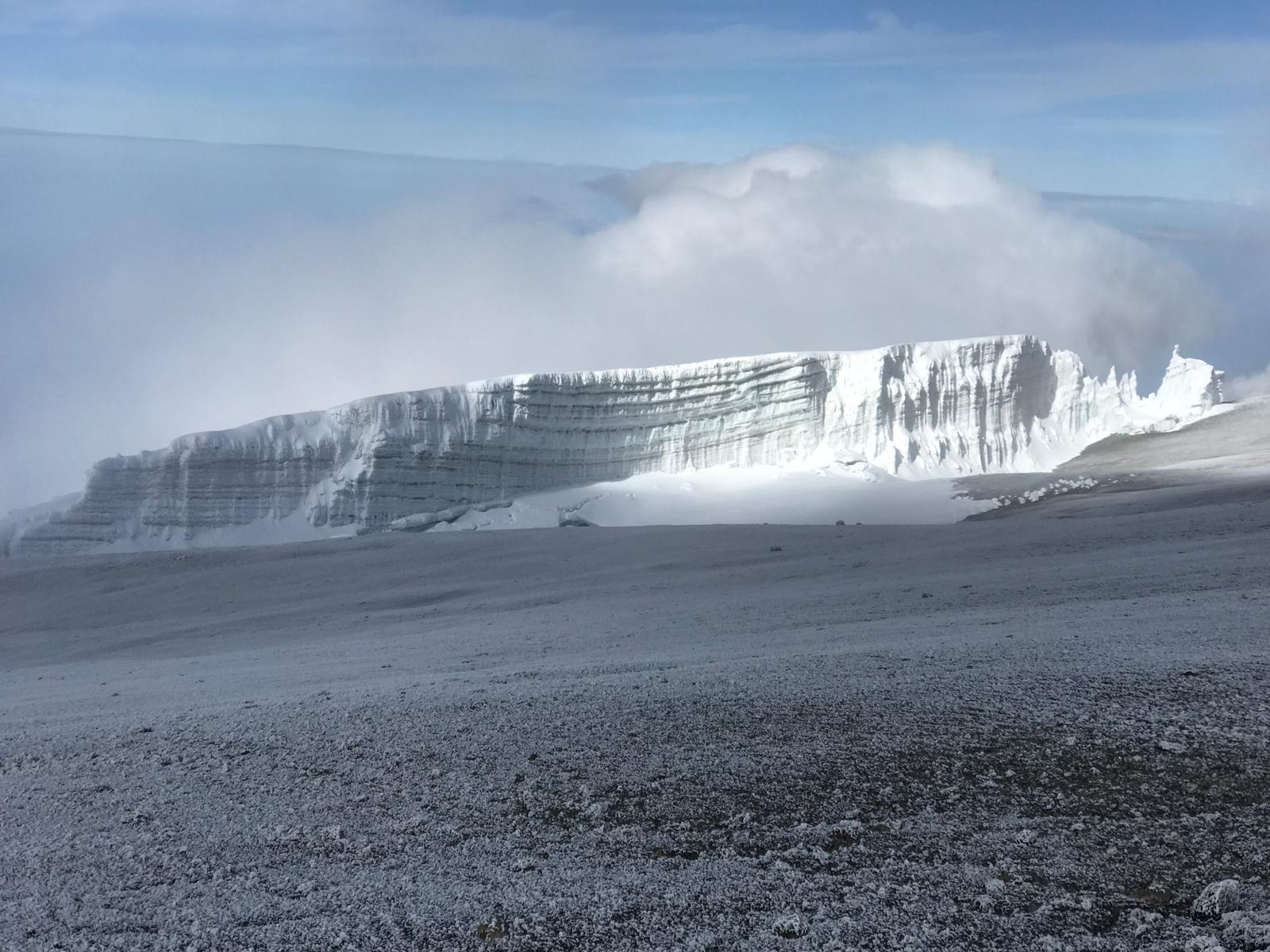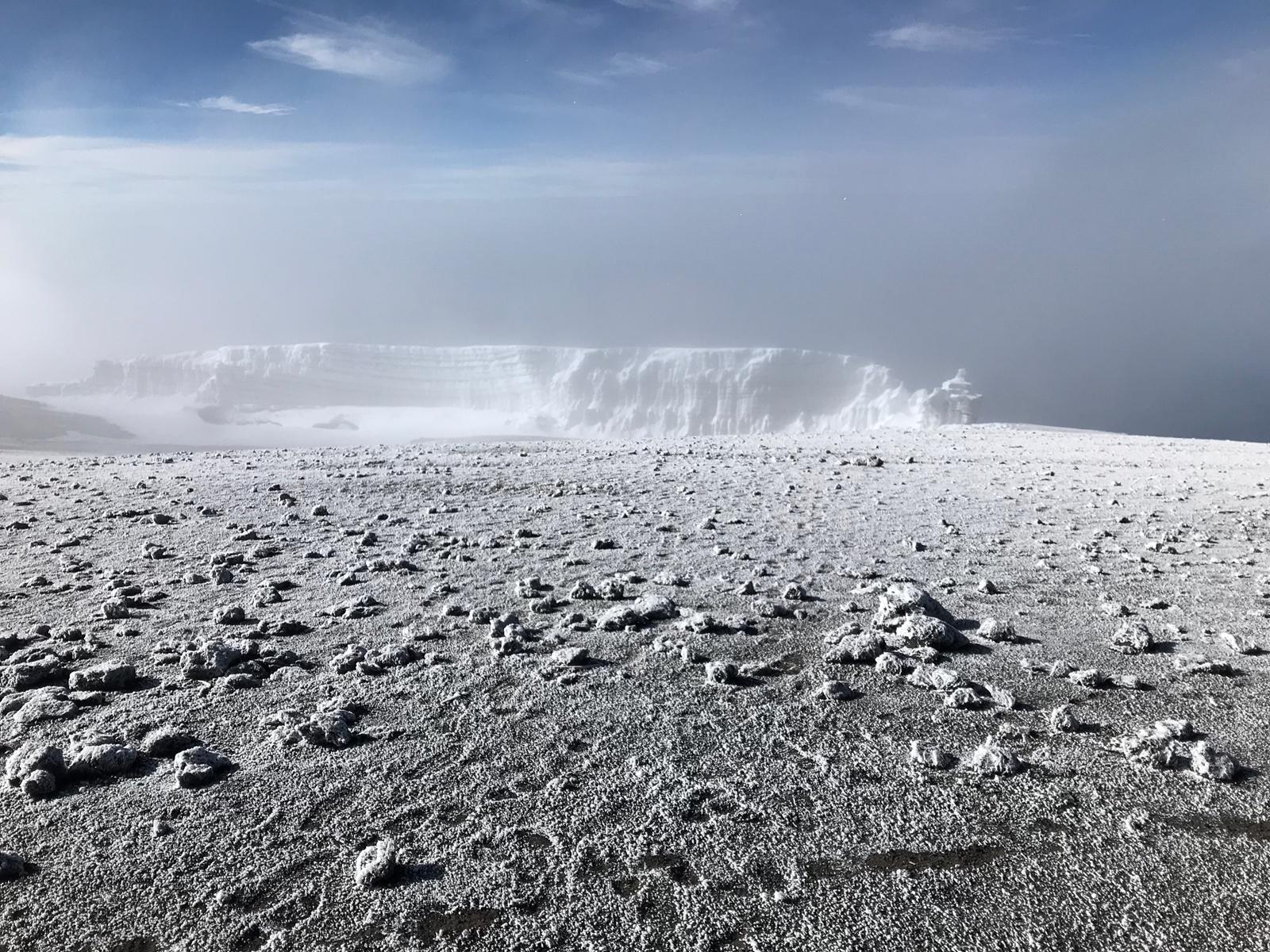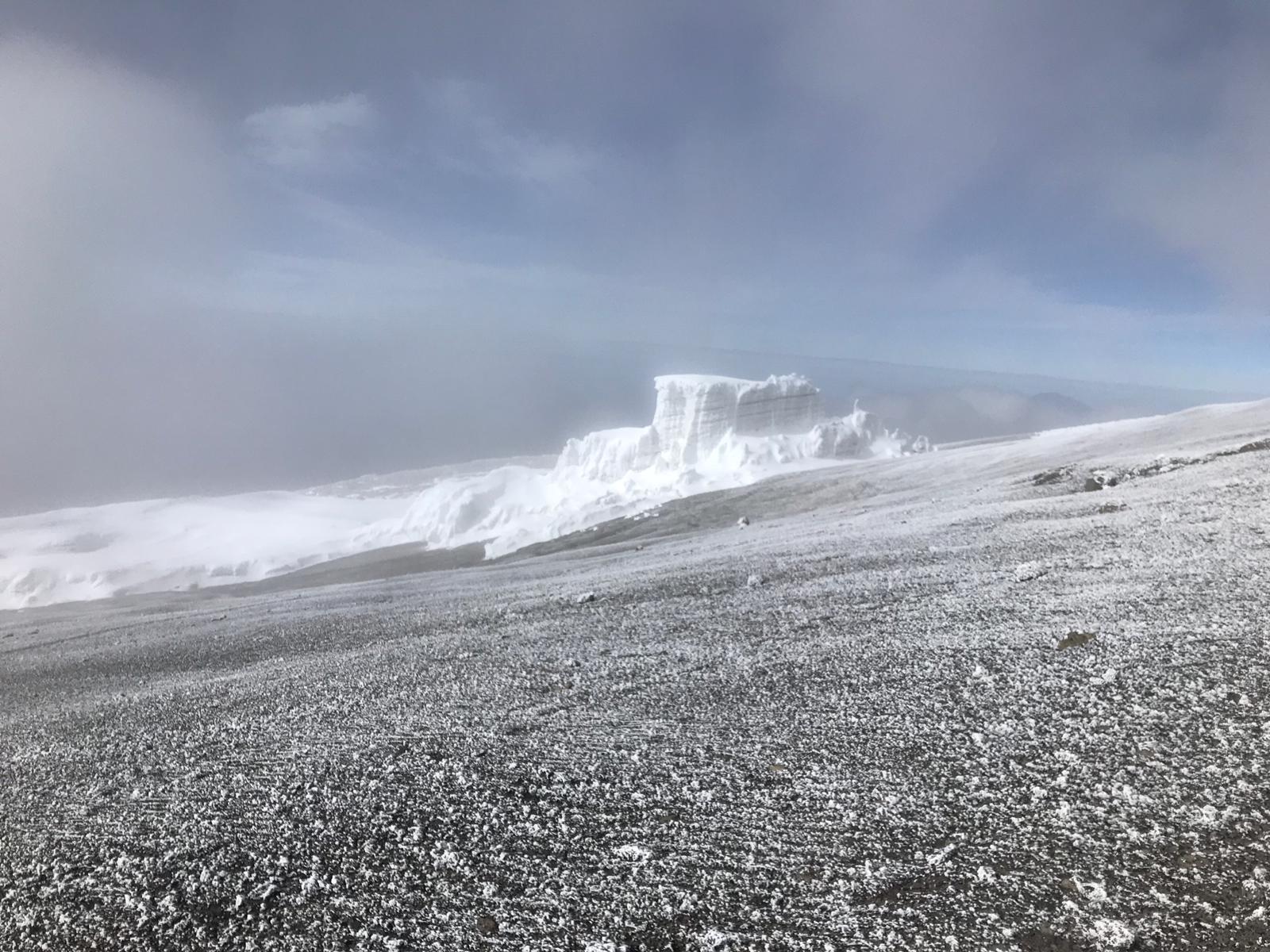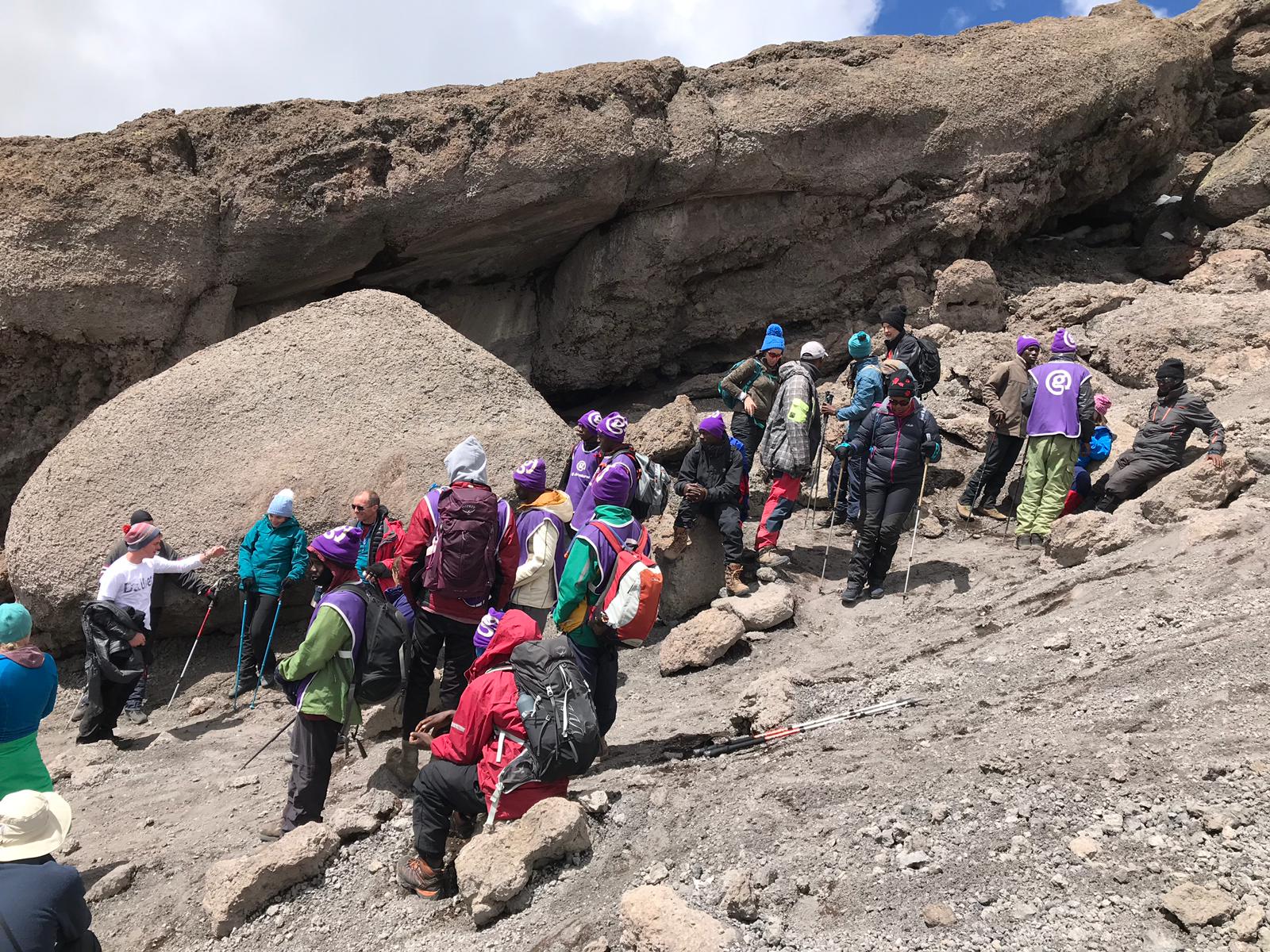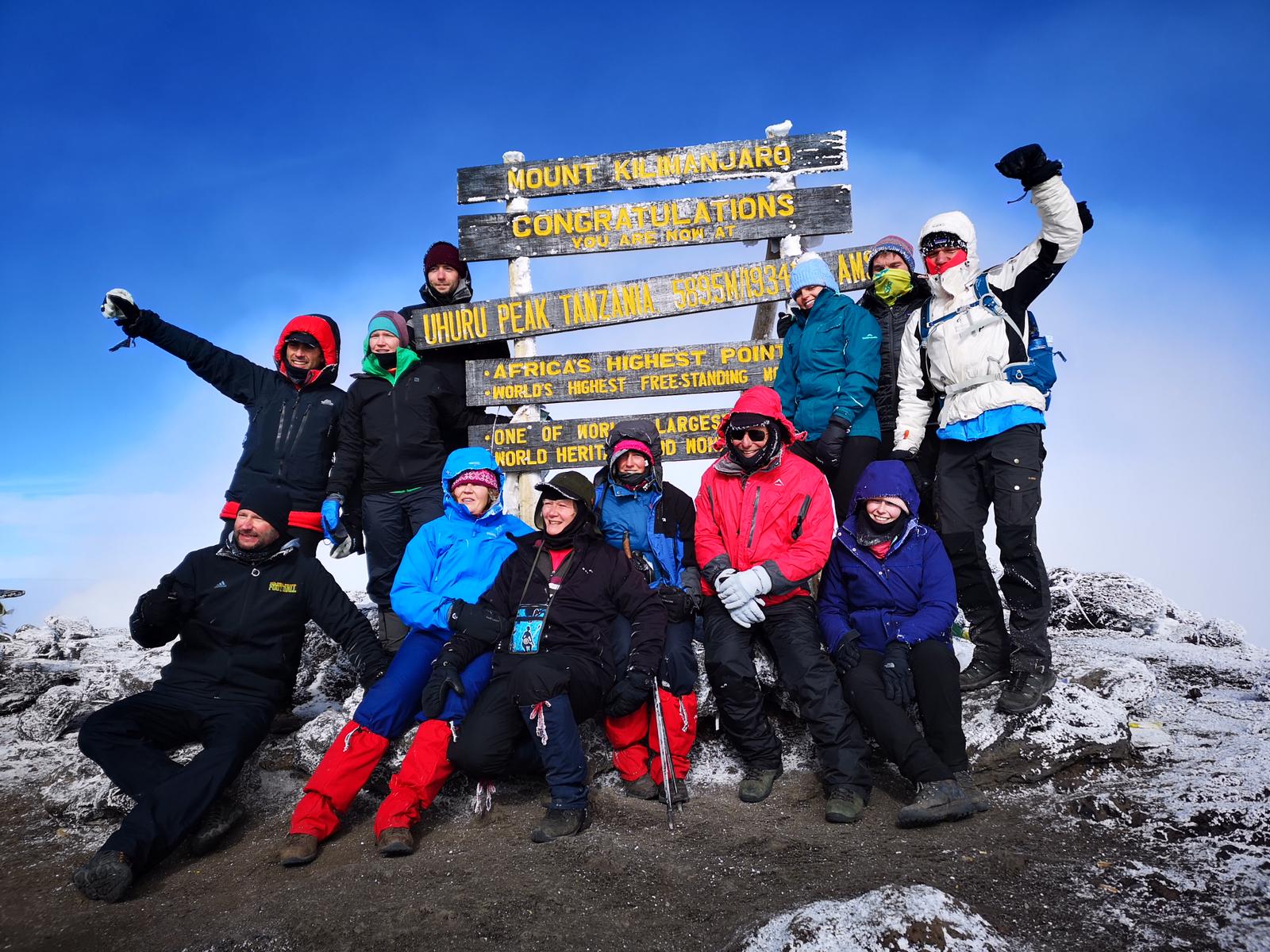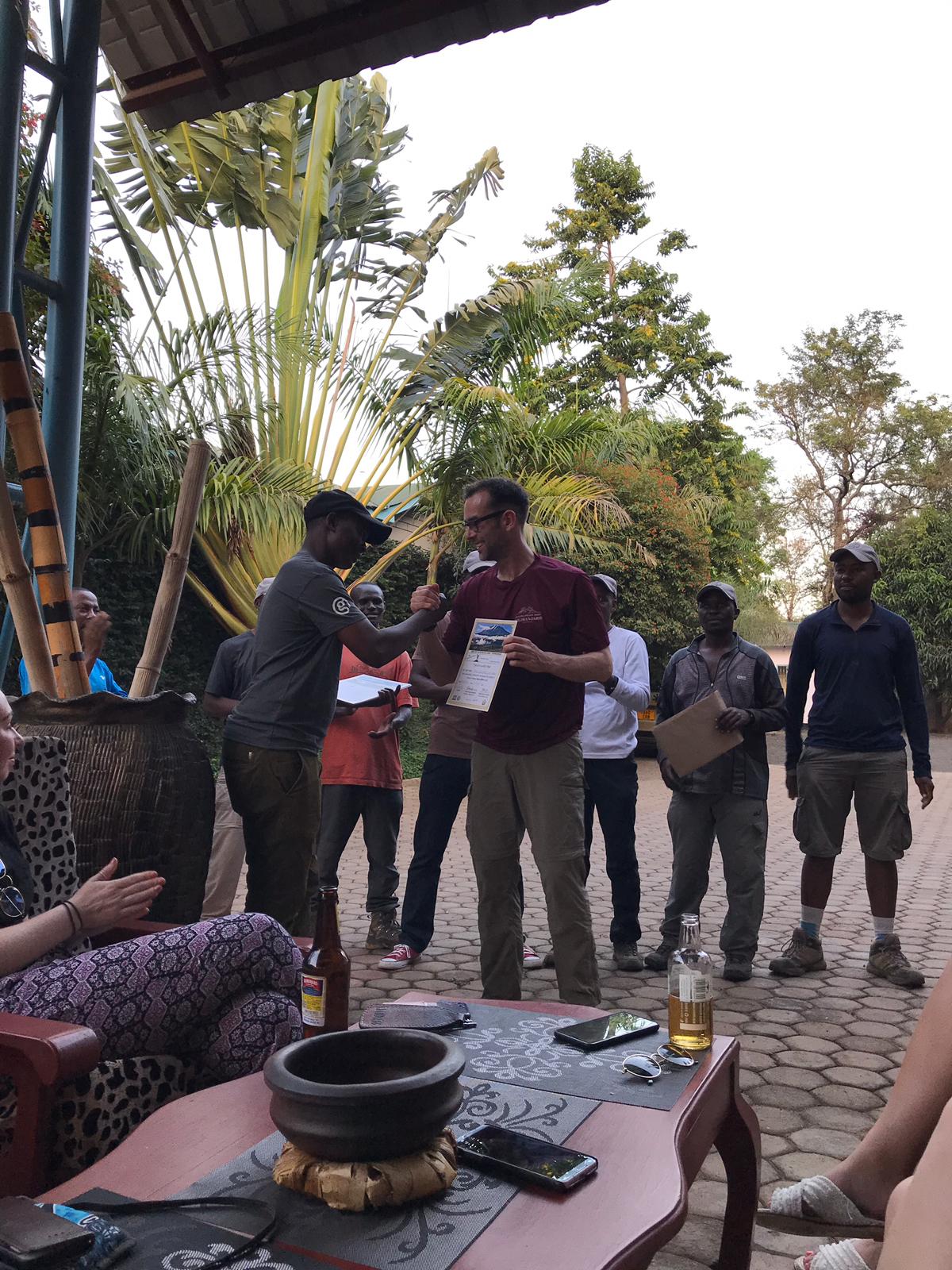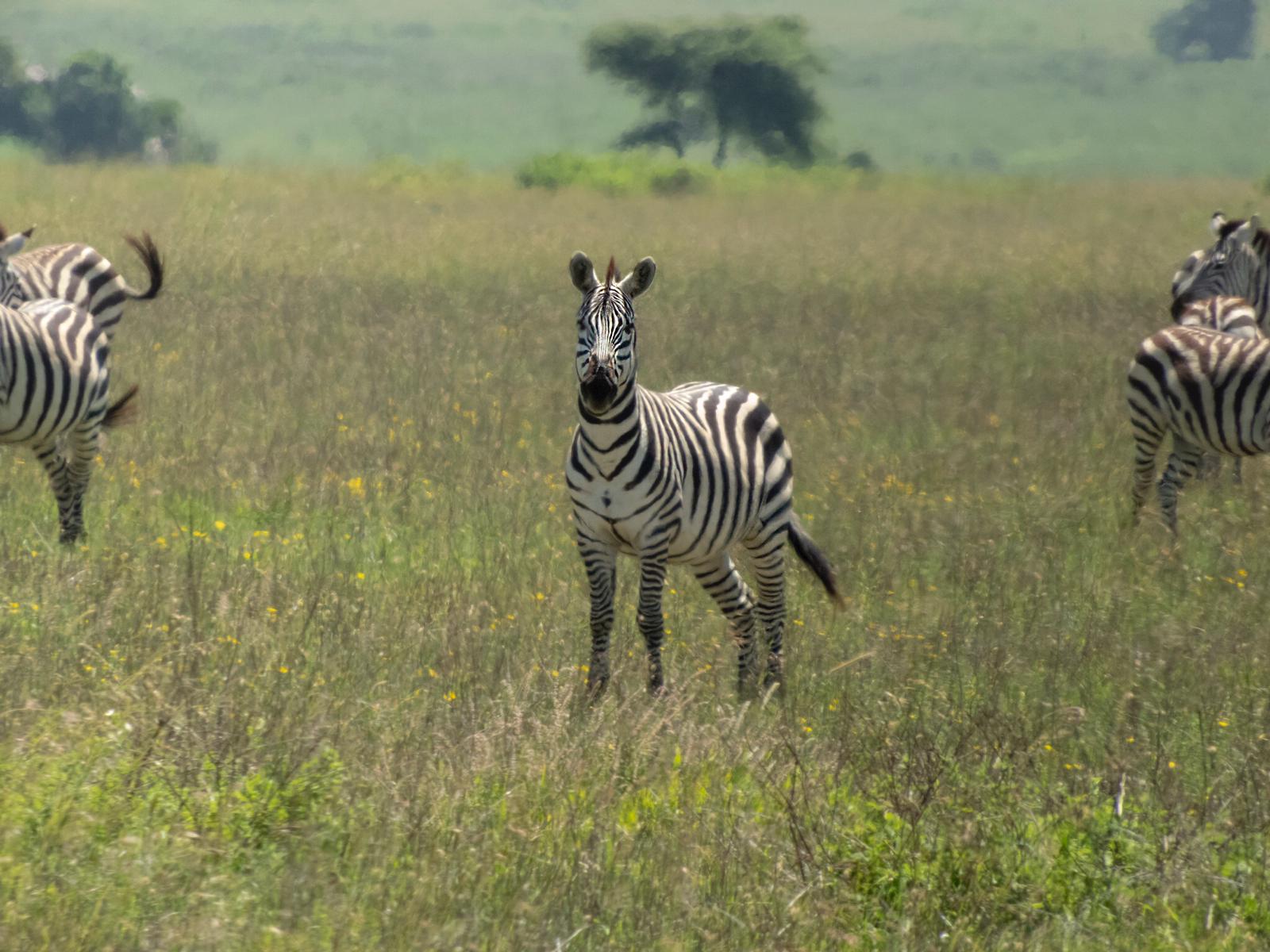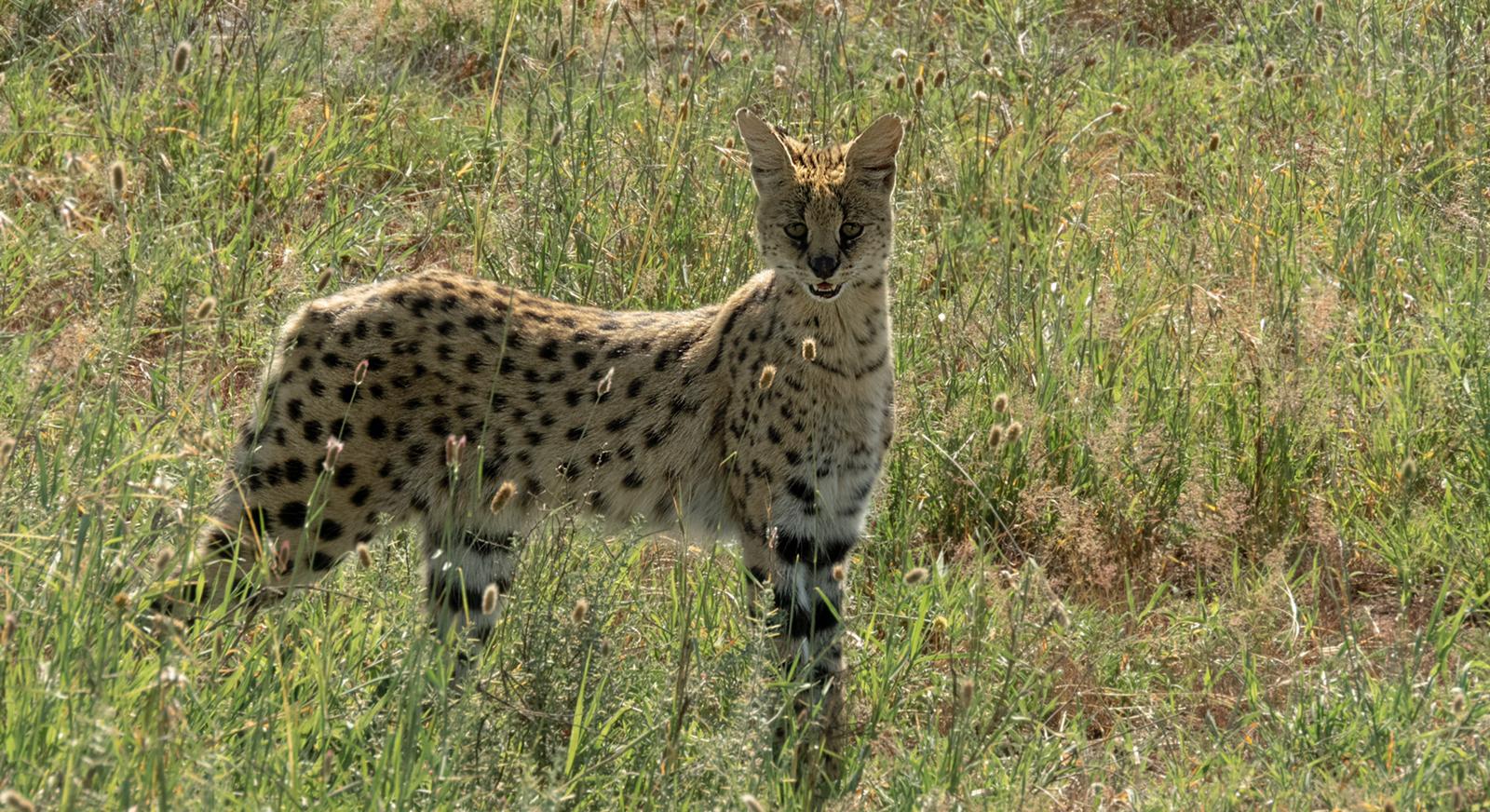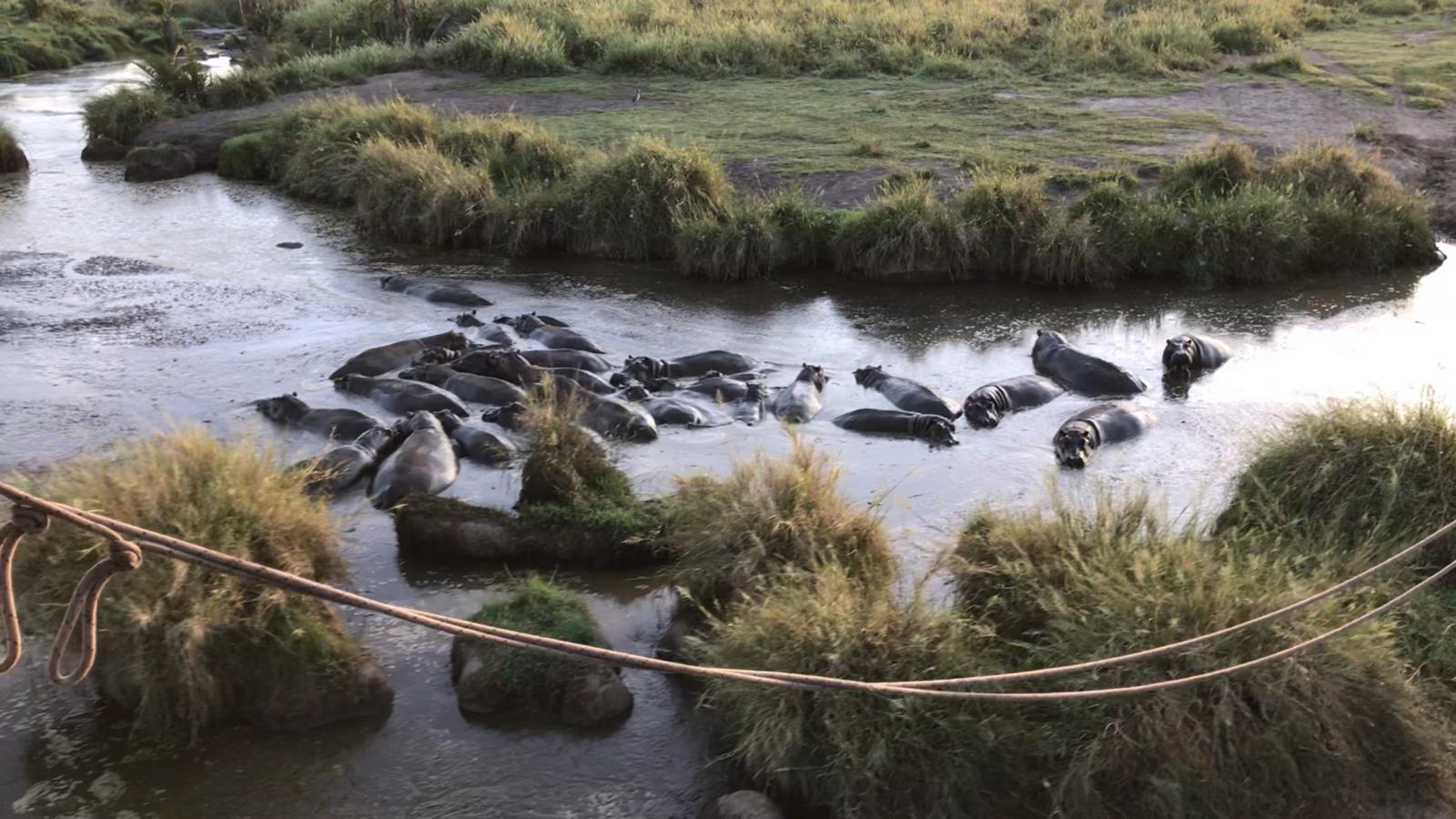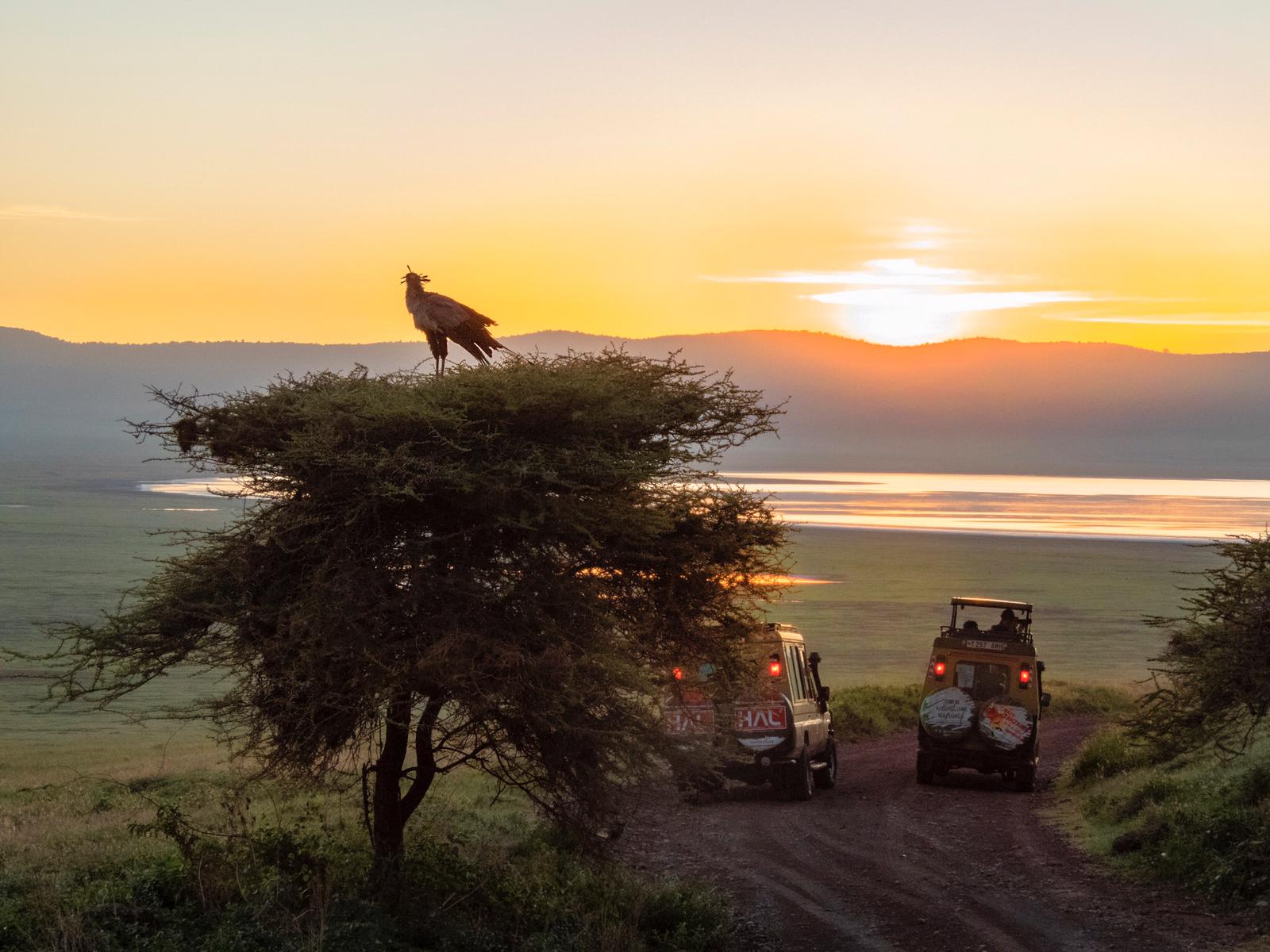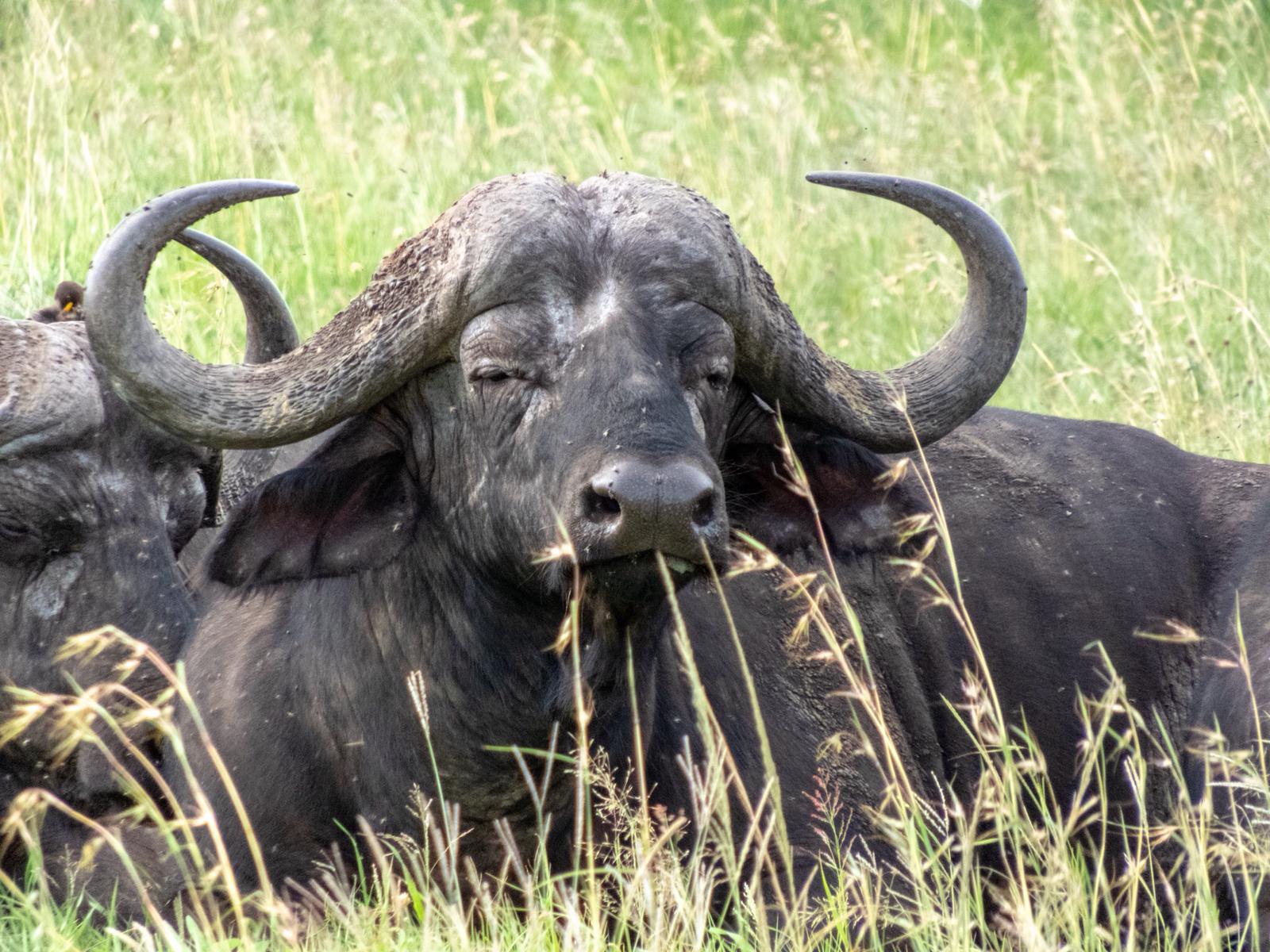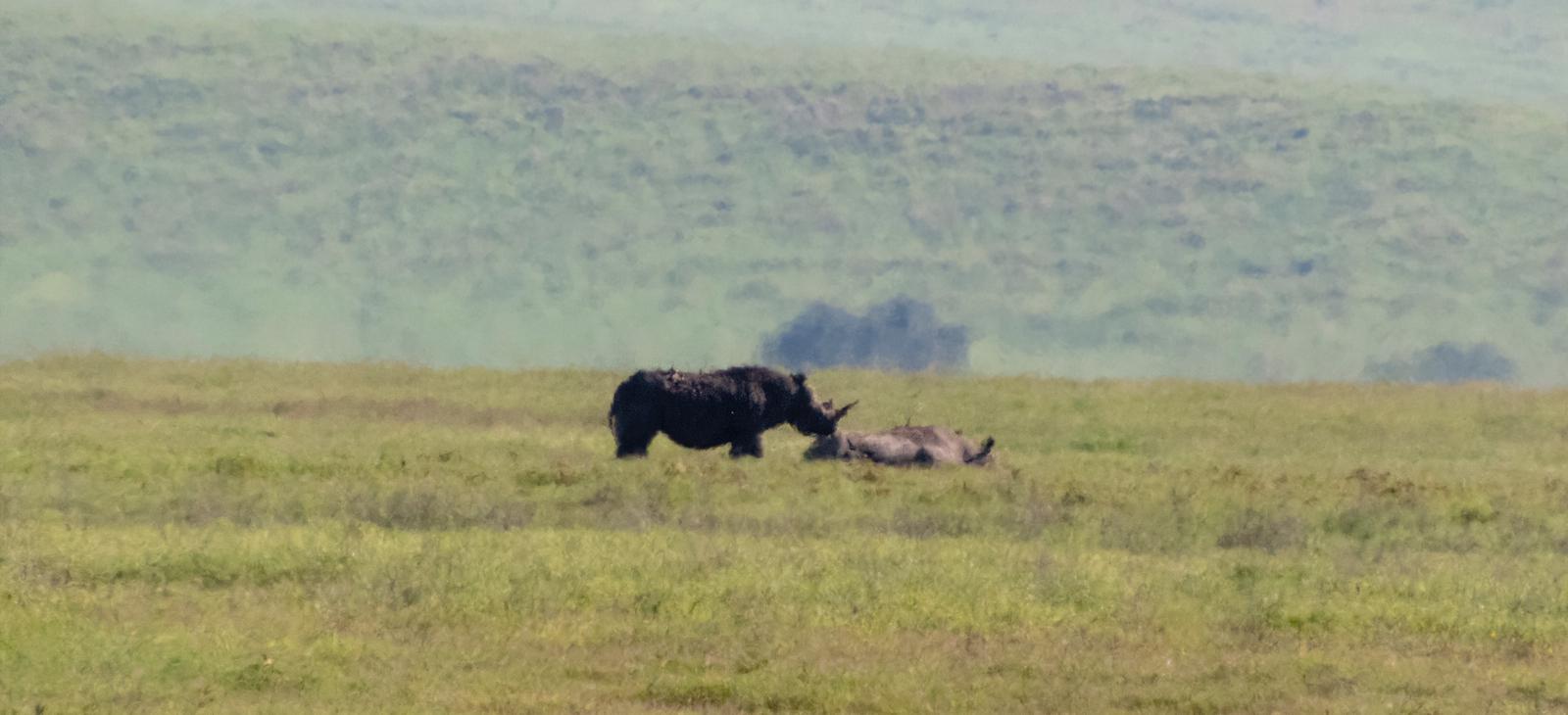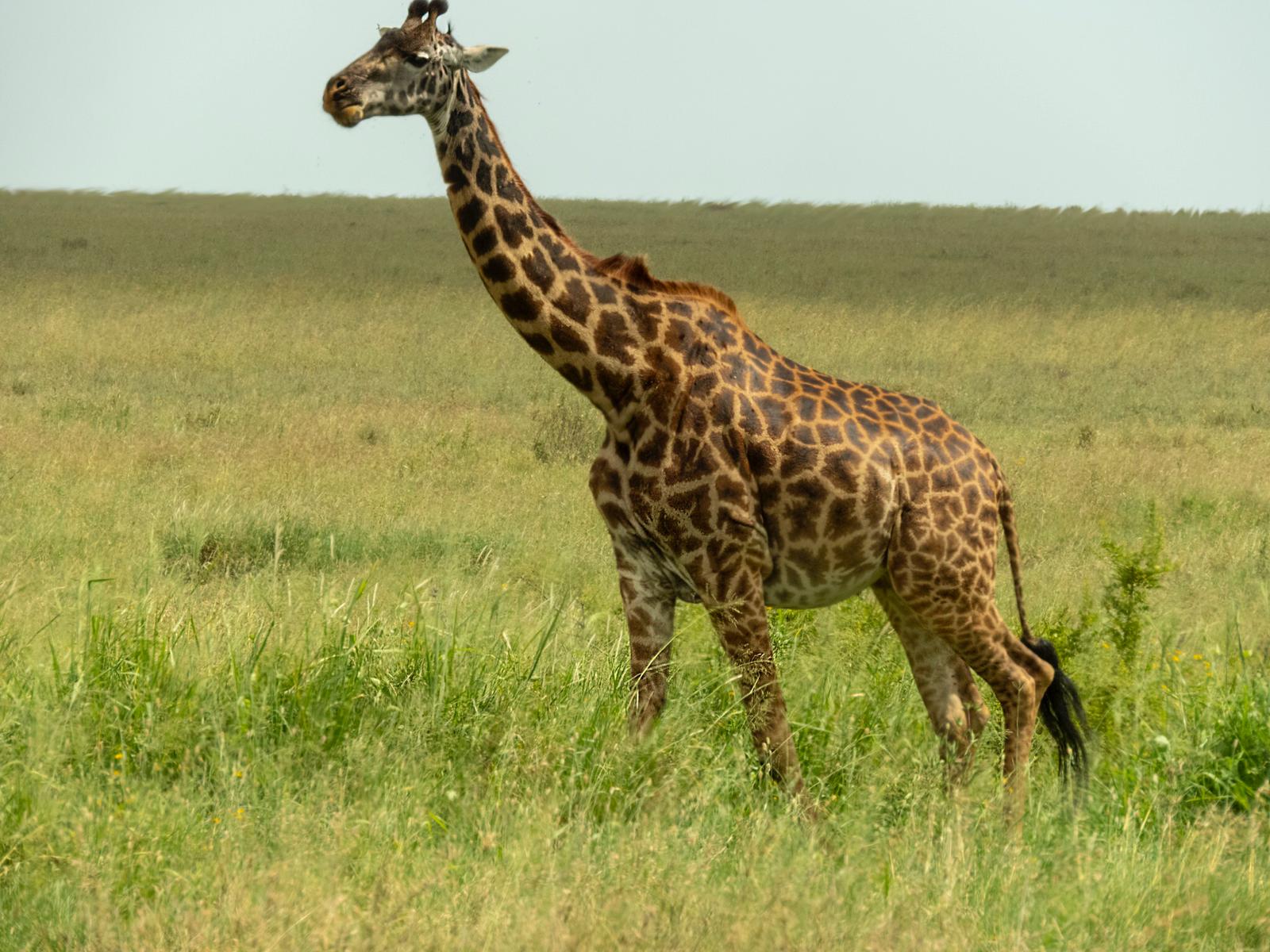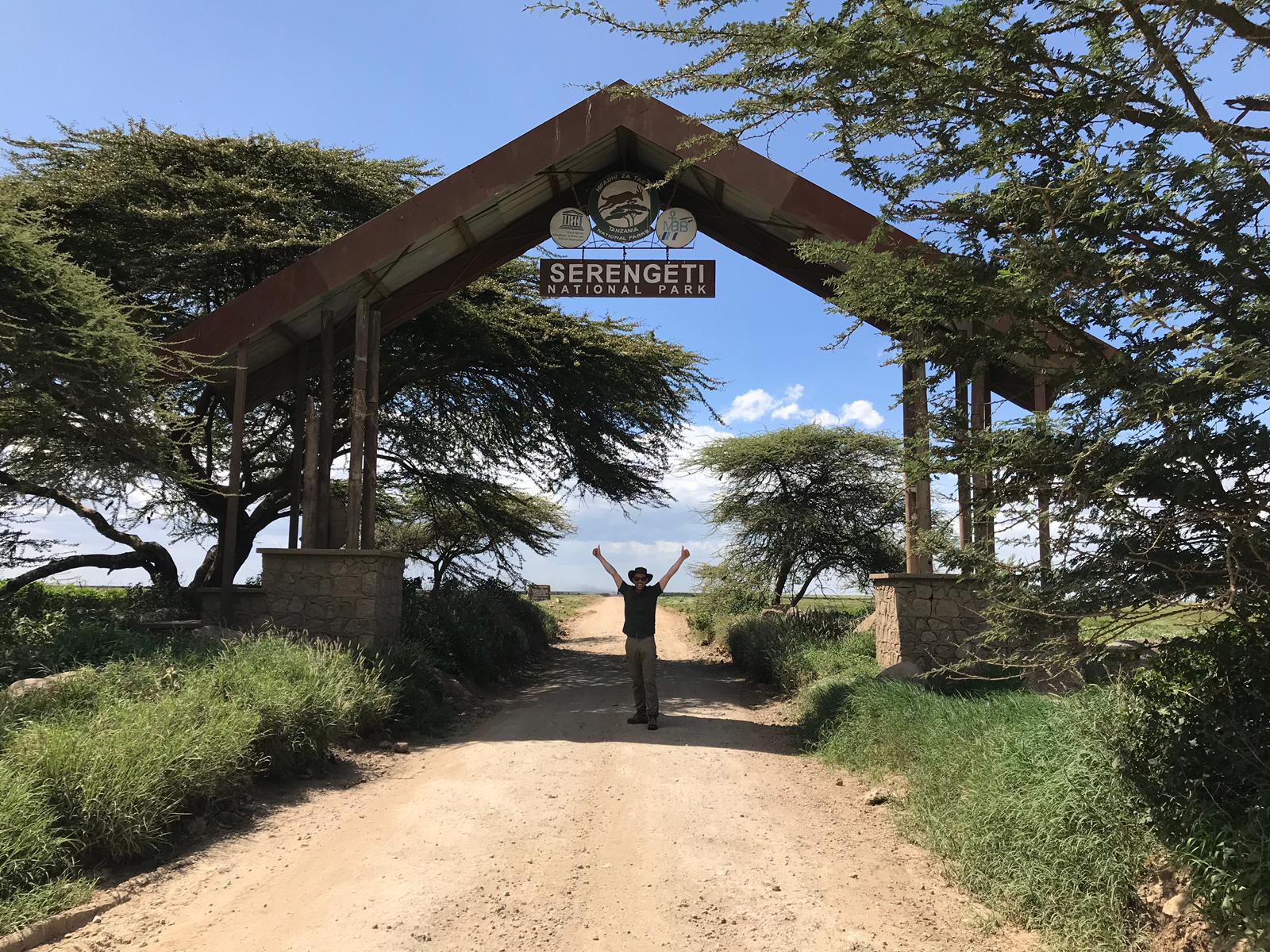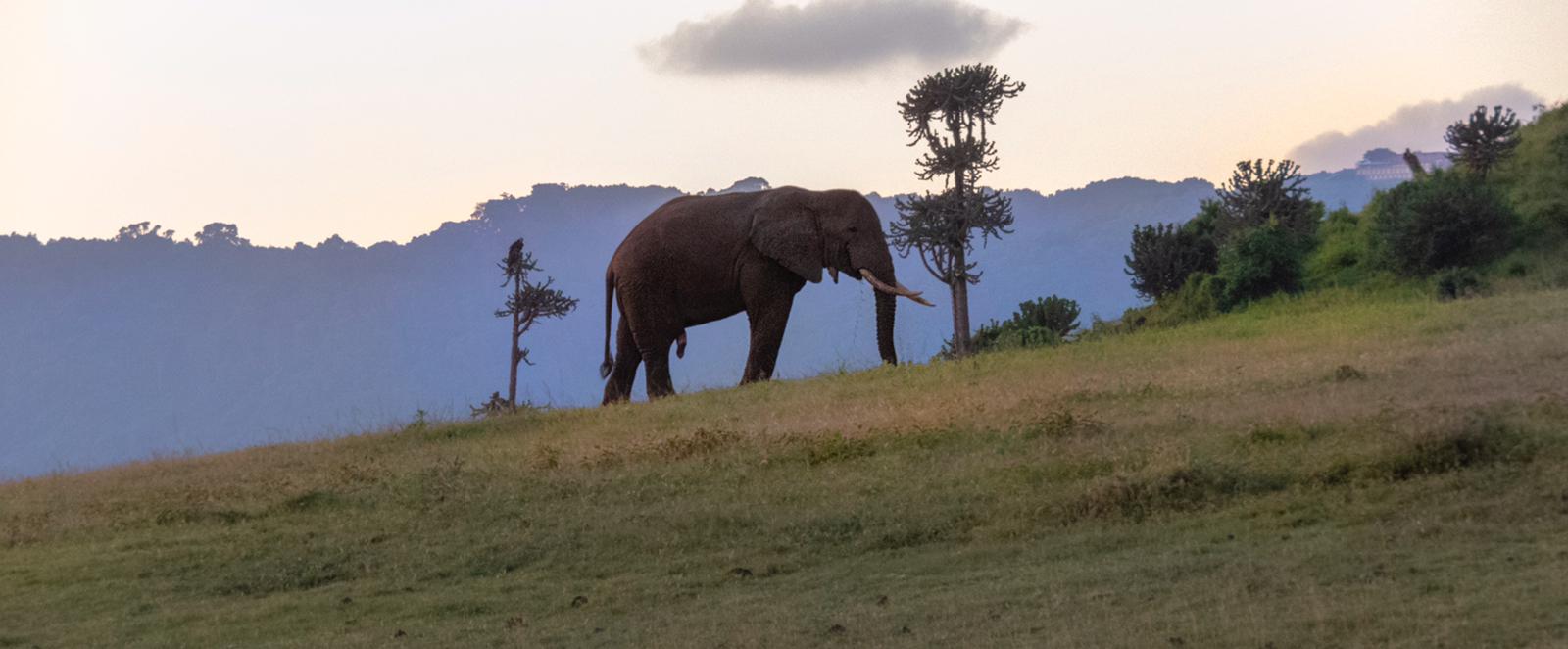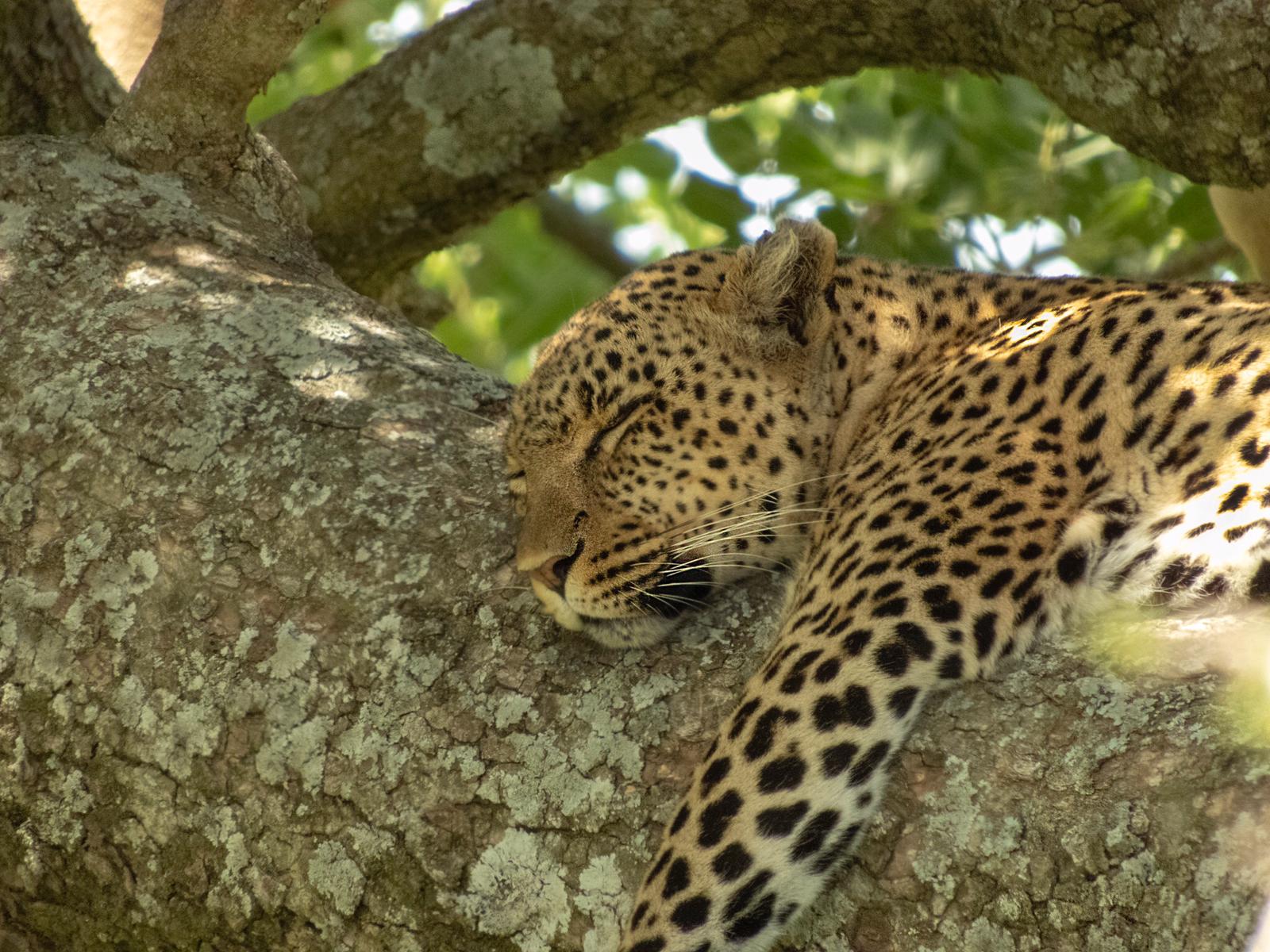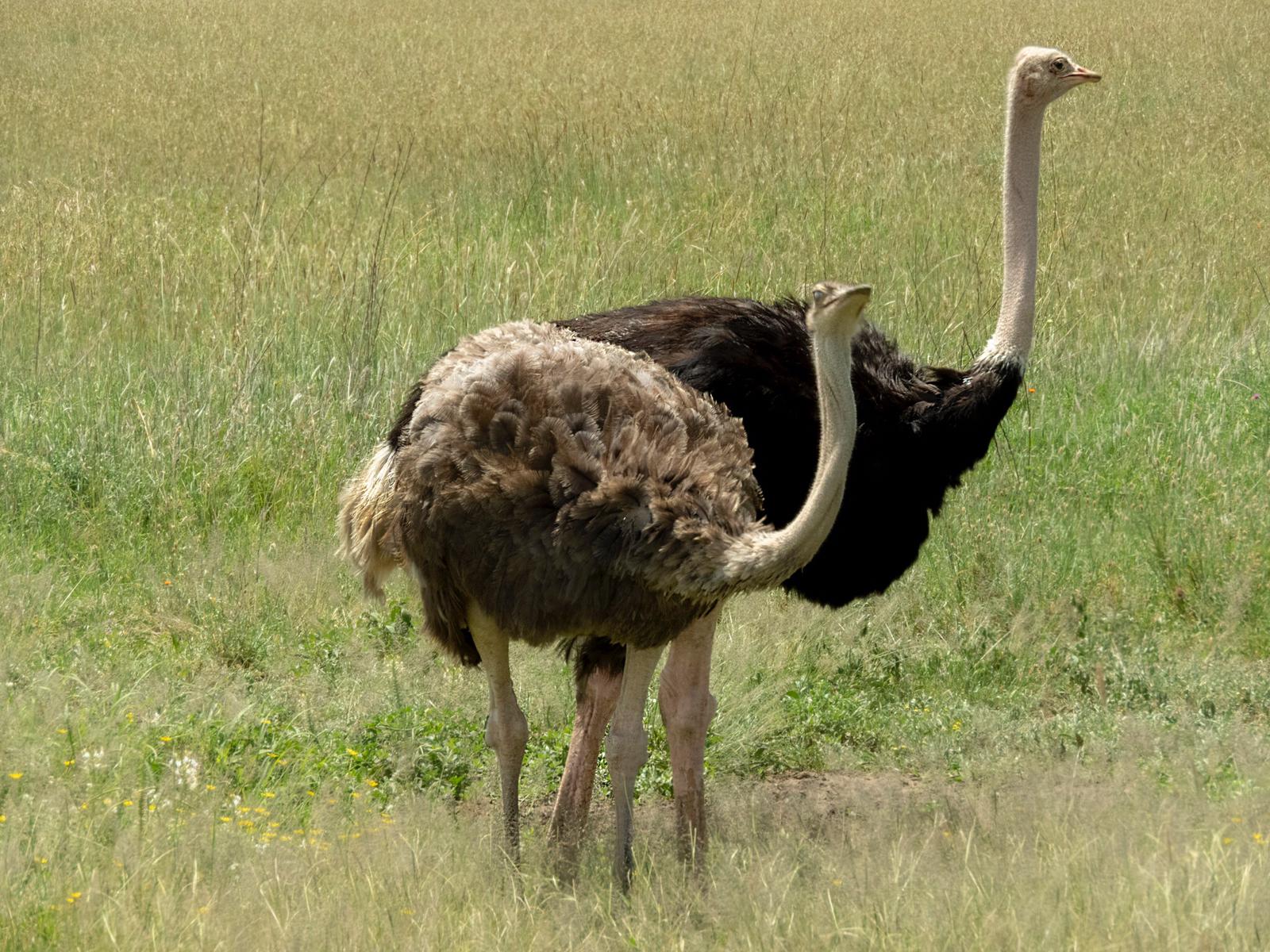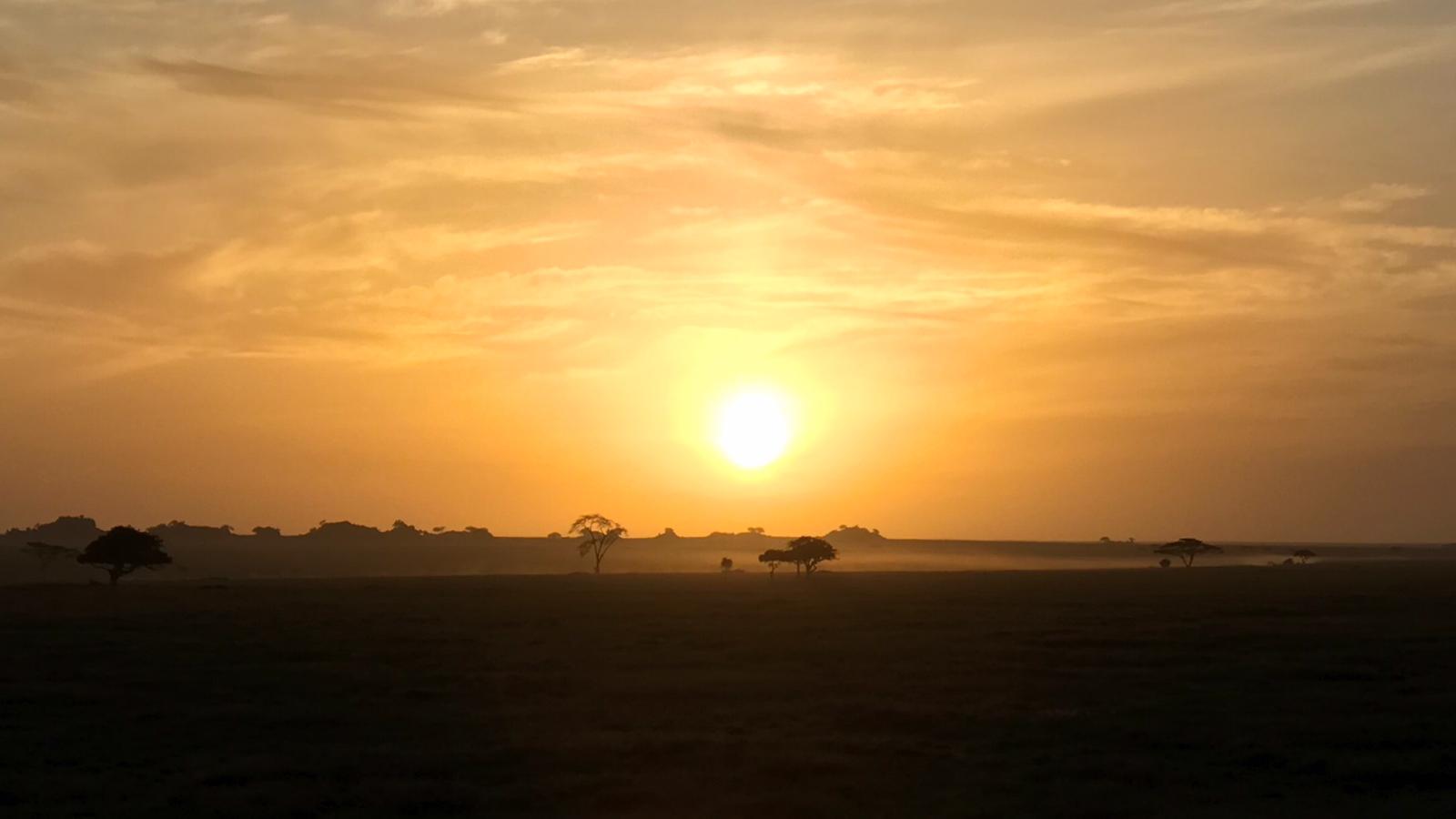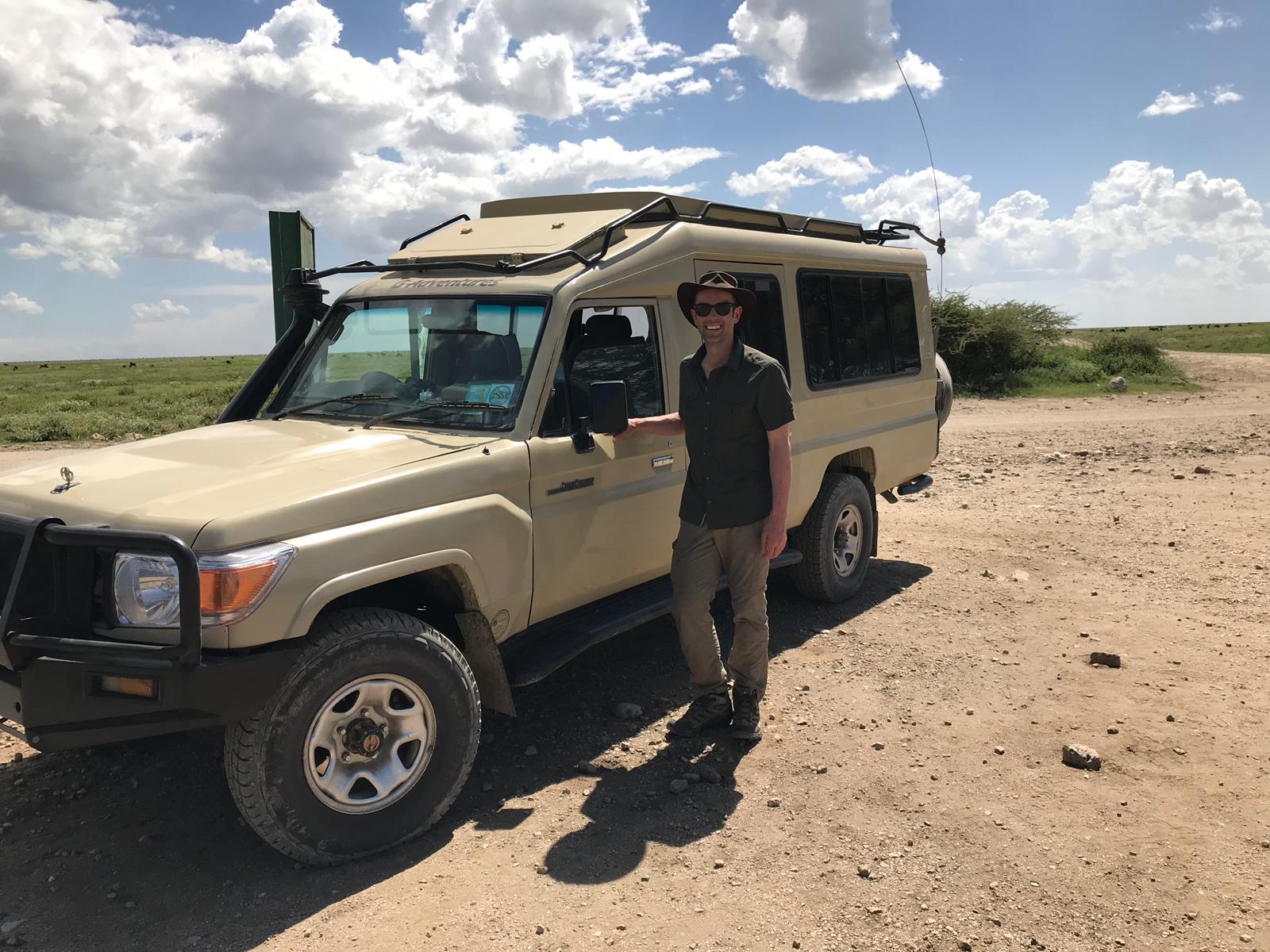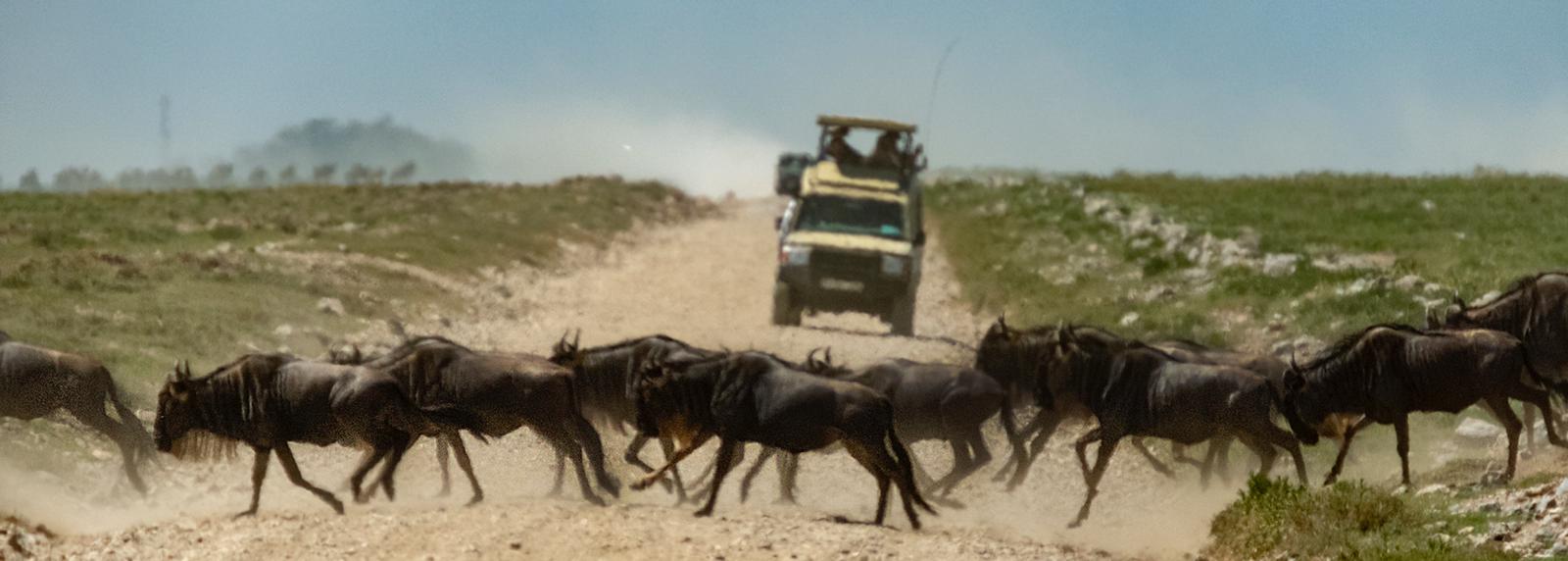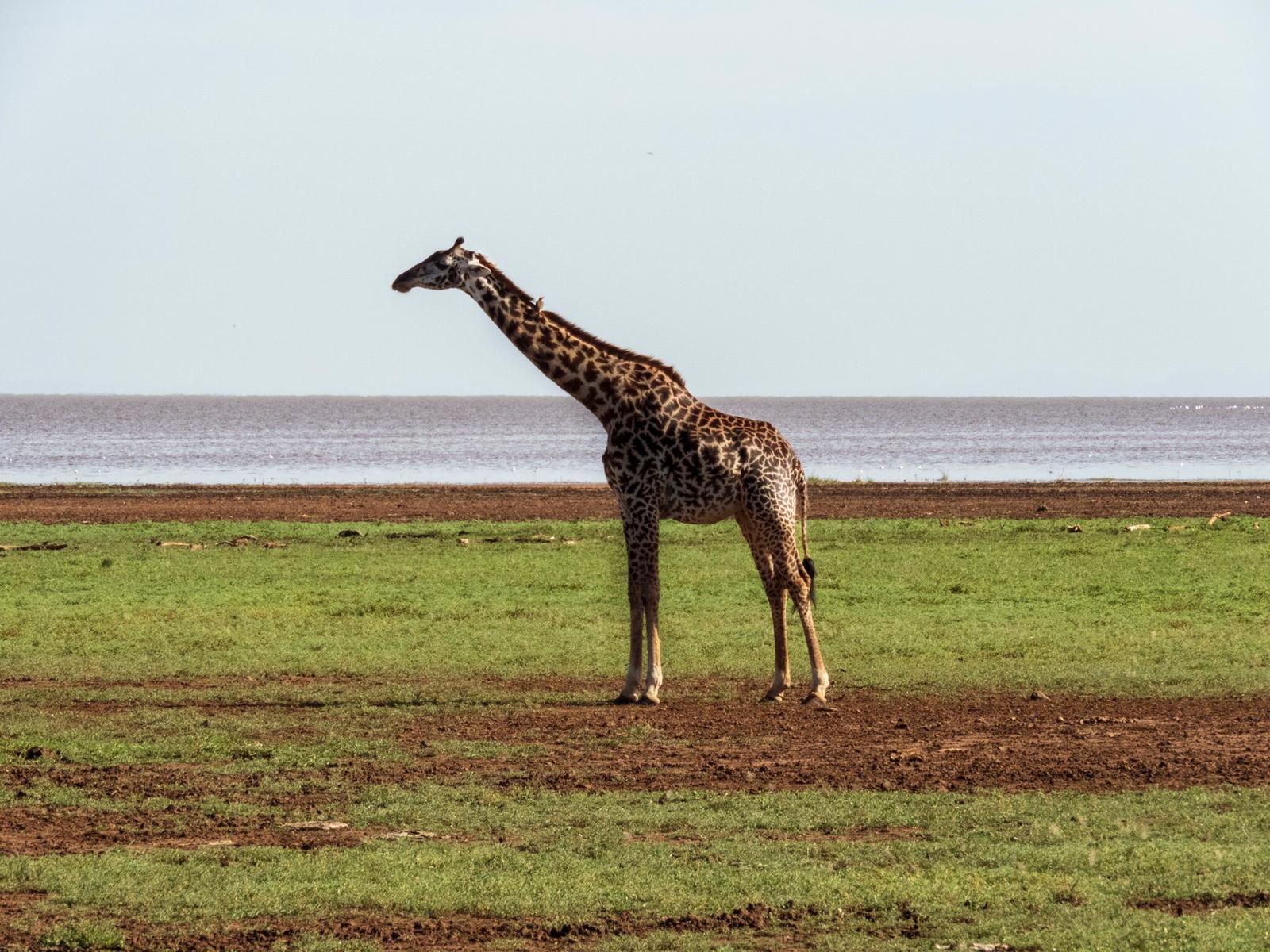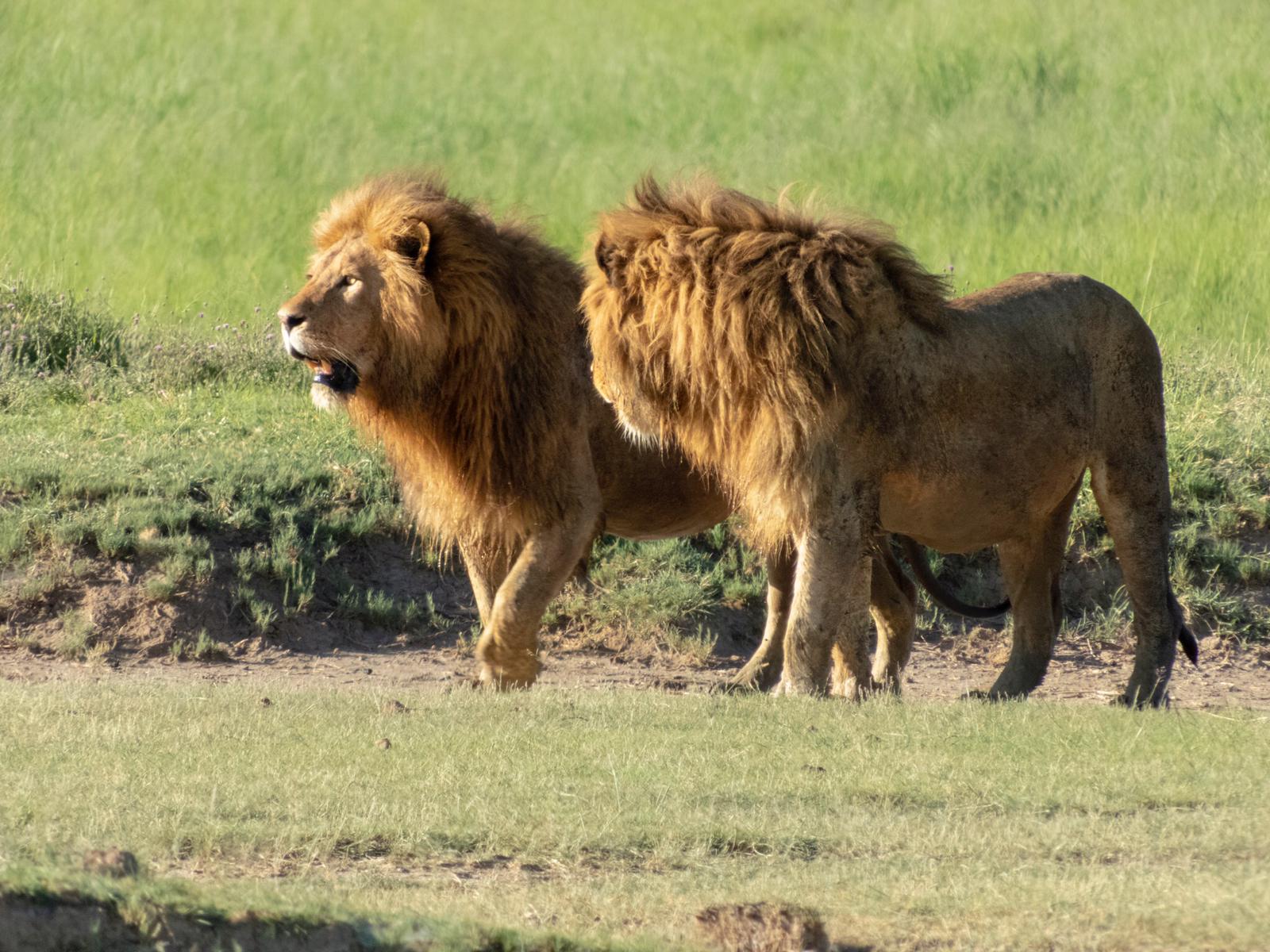Late last year Ryan, one of our vets, booked a two week holiday for early February, little did we know it would be a holiday like no other… he was planning to walk Mount Kilimanjaro!
If you are an early-bird, you may have spotted Ryan walking up and down Stop & Call Hill before he started work, getting that practice in. He also took to Snowdon and many other mountains in order to build that stamina for the epic hike he was going to undertake. To reach the peak of Mount Kilimanjaro it would take five days of hiking, yet only two days down the mountain.
To give you an idea of the enourmacy of this challenge, Mount Kilimanjaro is 19,340 ft. If you have done a skydive you will have jumped out of the plane at 14,000 ft. It is the highest mountain in Africa, about 4,900 metres (16,100 ft) from its base, and 5,895 metres (19,341 ft) above sea level.
The mountain has five zones to trek through, with a range of terrains and fluctuating weather:
- Bushland / Lower Slope:, 800 m – 1,800 m (2,600 ft – 5,900 ft);
- Rainforest Zone: 1,800 m – 2,800 m (5,900 ft – 9,200 ft);
- Heather / Moorland: 2,800 m – 4,000 m (9,200 ft – 13,100 ft);
- Alpine Desert Zone: 4,000 m – 5,000 m (13,100 ft– 16,400 ft);
- Arctic Zone: 5,000 m – 5,895 m (16,400 ft – 19,341 ft).
Touching down in Tanzania, Ryan met the lead guide, James, his climbing guide Charles and he was also assigned a porter who would carry all of his belongings, tent and food required for the trip. The mountain is set in a National Park and the locals take pride in the appearance of the mount, ‘everything that goes up, must come down!’ Yep that means everything! The porters even carried a portable loo.
Instantly James set to work ensuring everyone in the group was fully prepared and armed with enough water bottles and of the correct size. He whisked everyone off to the local supermarket to purchase bigger bottles, ‘You will need lots and lots of water!’ On route Ryan caught a glimpse through the rainforest of Kilimanjaro, the magnitude of the challenge began to dawn on him, but nothing was going to stop him.
Day one began with walking through the lower slopes and the rainforest climatic zones. There were monkeys keeping him company, luckily no elephants or creepy crawlies. Every night the team would take your blood pressure and pulse to check for any signs of altitude sickness.
Day two came along and so did the rain and altitude sickness, as Ryan said ‘It’s ten times worse than a hangover, you feel light headed and drunk. I couldn’t even tie my shoe laces and your reactions are so slow.’ But this was not going to stop Ryan, with approval from James and Charles he set off walking through the cloud level. This was particularly cold and damp day.
Day three involved walking up and down the mountain, this begins to build resilience to the altitude change and reduce the likelihood of getting severe altitude sickness. Camp for night three was at 3,650m, only another 2,245m to go. Every evening the walkers arrive to camp, all tents erected, food cooked and all the porters start their welcoming dance and song. The porters are incredible people, they take down and put up the camp site, they cook the food, walk past the group in order to set up for the next night. The weather on the Kilimanjaro is highly changeable, it can be sunny one minute and the next cloudy and cold. The African people say the mountain gives life and god lives at the top, and that the weather depicts what gift god is giving. If it is raining and stormy the African people believe they should not be on the top of the mountain. James, the lead guide, has walked up the mountain about 200 times, it is likely the porters will have been up a similar amount of times.
Day three involved walking through the alpine dessert, it was a tough day as breathlessness was a common feature. During the night you would often wake to have a big breath, this was due to the lack of oxygen.
Day four involved 8 hours of walking, at this level there is minimal life, but there are the occasional succulents and thistles. Base camp was at 4773m, this was the eve of the summit, a very exciting night although slightly scary. Next to the camp was a flat piece of land for a helicopter to land, it is worth noting that a helicopter cannot go any higher, so if anything was to happen at the top you have to get back to base camp to be evacuated. This evening the group had a team briefing on the next day, Jame announced ‘we will wake everyone at 11pm and begin to walk, you must put all the clothes you have with you on!’ The group promptly went to bed at 6pm, however, with frost on the inside of Ryan’s tent and the wind nearly blowing him away, he didn’t get a huge amount of sleep.
Summit day had arrived, they set off at midnight after a hearty bowl of porridge and ginger. Ginger helps to increase your appetite, so the porters were always giving it out to ensure everyone ate enough food so they could reach the summit. With the wind chill it was around -17 degrees, there was no stopping for breaks, it was far too cold. In front all you could see was a line of head torches and blackness, ‘all I could do was look down on the ground and concentrate on taking slow steps. It is very much slow and steady, take baby steps.’ At one point Ryans hands were so so cold, he asked Charles his climbing guide if this was normal, his reply to these questions was always the same, ‘It’s part of the holiday, we don’t charge you for this!’ To give you an idea of just how cold it was, water bottles had frozen solid. The sun rose at 6:30am which brought much needed warmth!
At 7:27am they reached Stella point, 5756m, this is the last peak and it is a steady slope to the summit from here, however, this is now the Arctic zone! Yep Ryan’s eyelids stuck together, it’s very cold. He also had an overwhelming feeling of danger, if something was to happen at this point there is no evacuation possible, it would be a dash back to base camp.
Later that morning Ryan reached the summit of Mount Kilimanjaro, what an achievement. With the weather starting to turn, they took photos, and began their descent down.
‘The challenge is 95% mental, as you walk so slowly, with such small steps, a shuffle.’
‘The human mind is capable of so much more. Think of your daily life, you can do anything, if you put your mind to it, you can really surprise yourself.’
We are incredibly proud of what Ryan has achieved, we are so proud to have him in our team at Fishguard Vets.
It is worth noting that Ryan did not walk this mountain for charity, this was a personal challenge which is highly commendable.
After his climb Ryan went on a safari of the Serengeti, here are some pictures of the amazing animals he saw.


